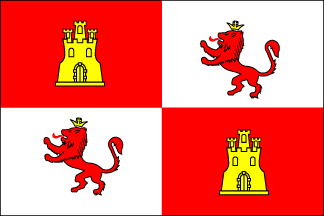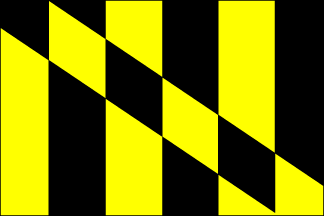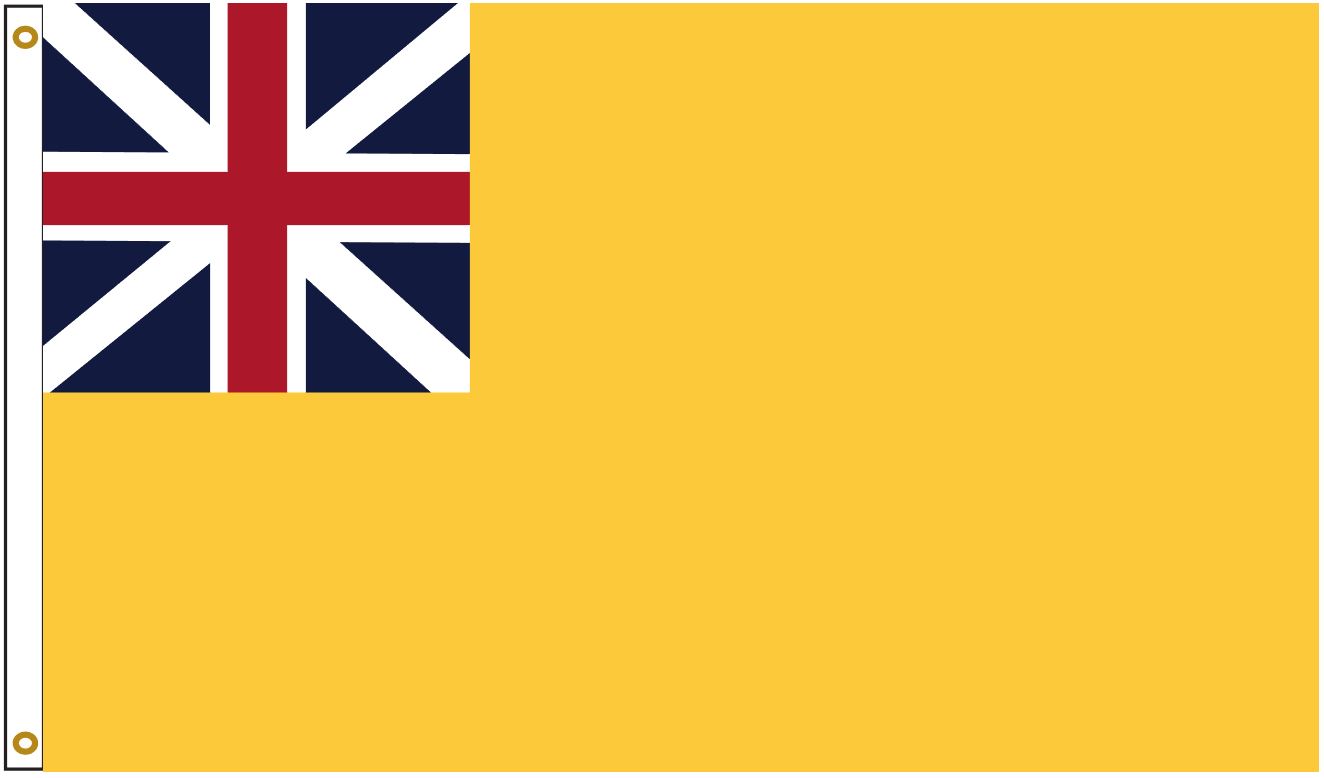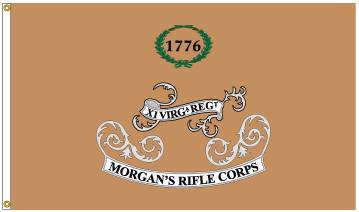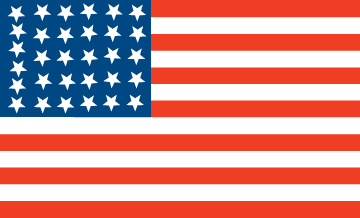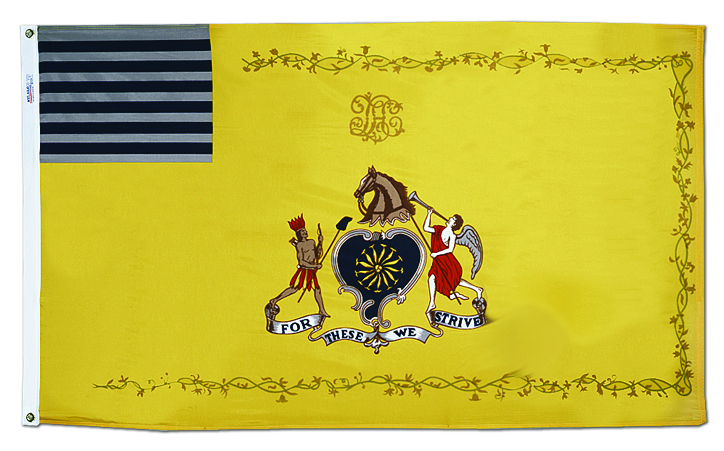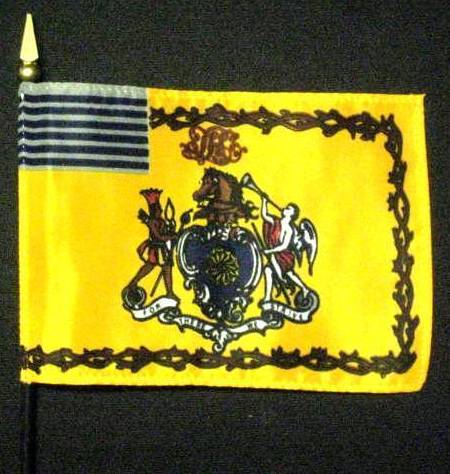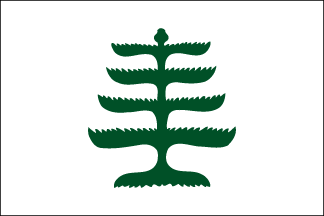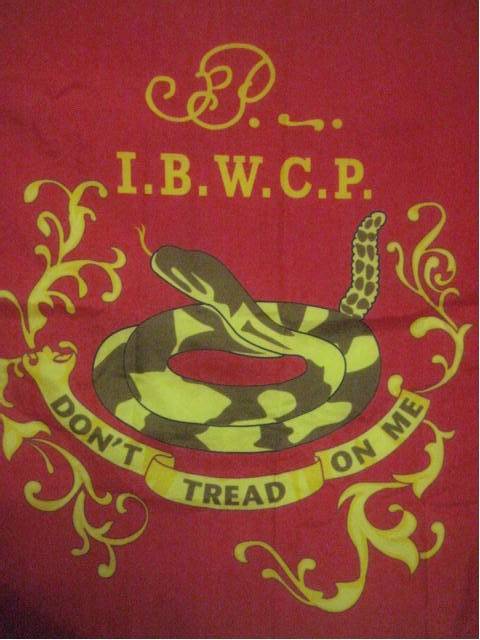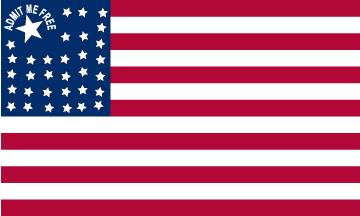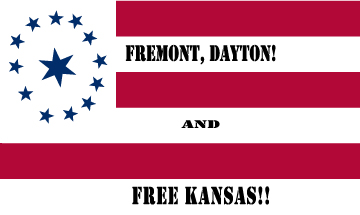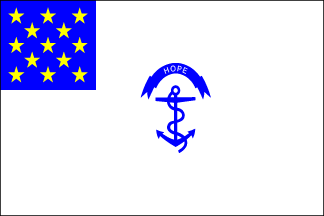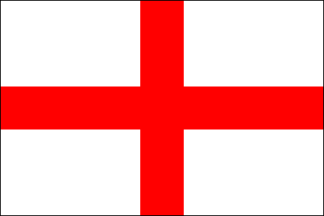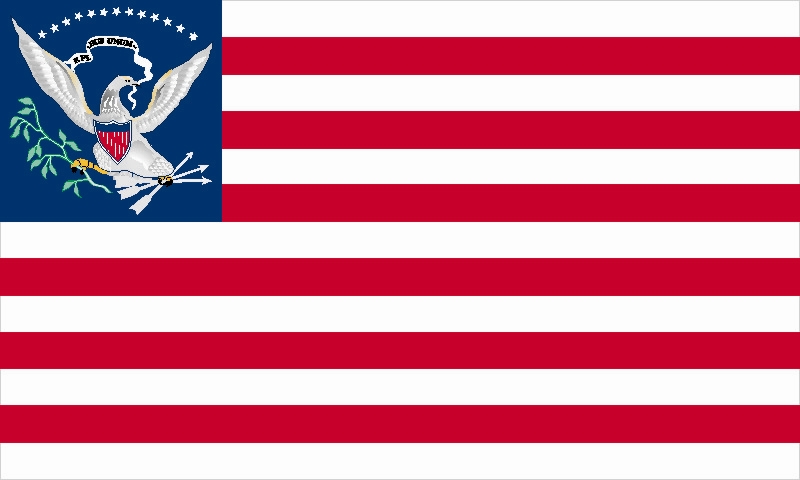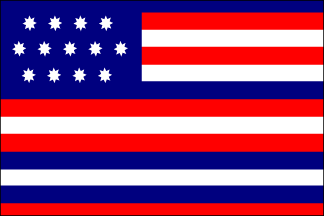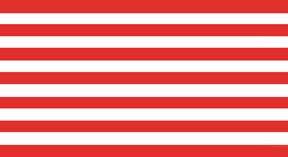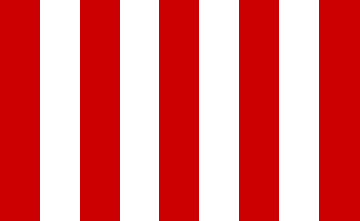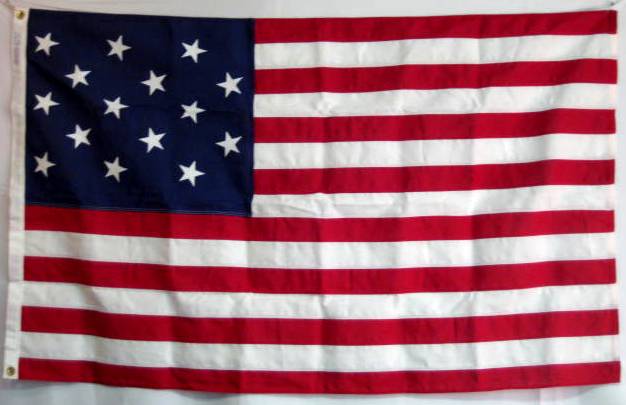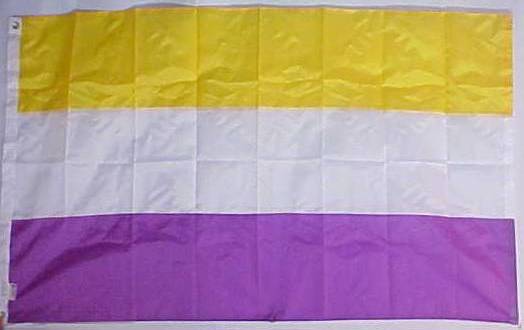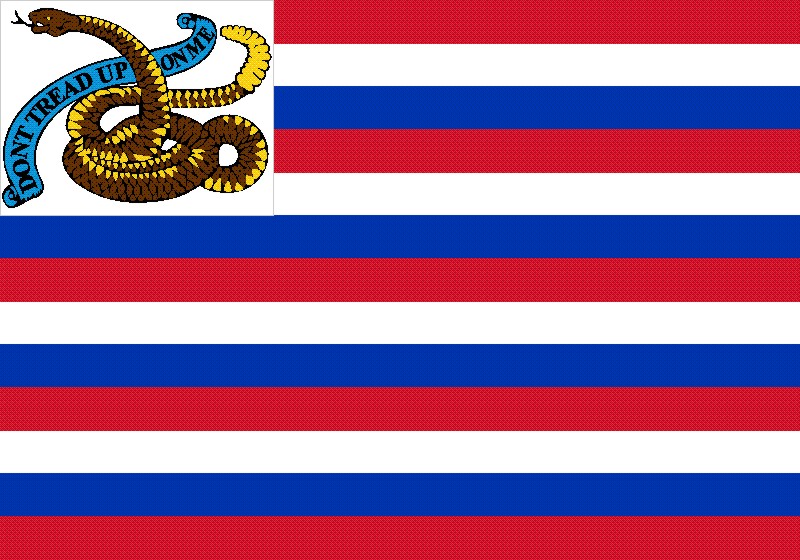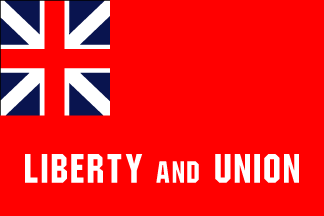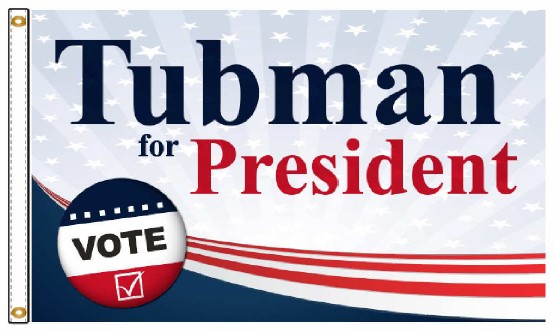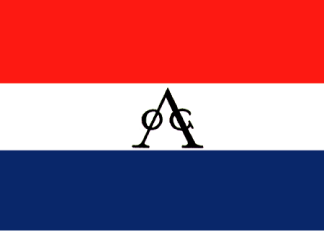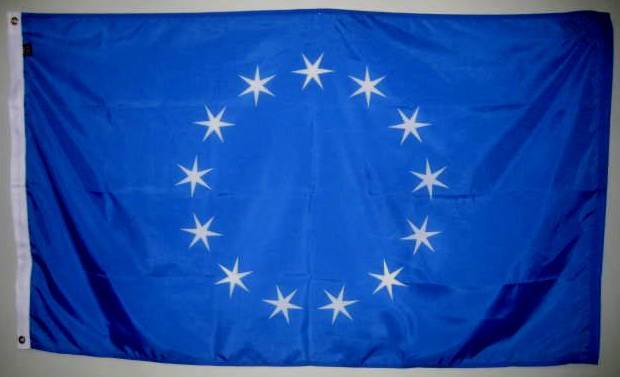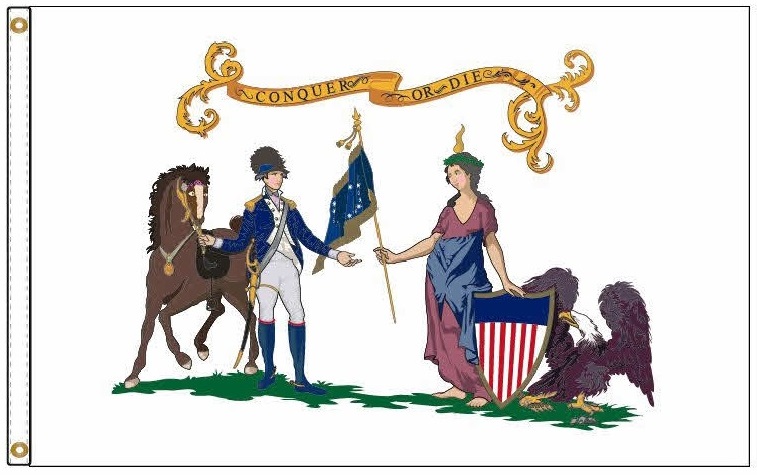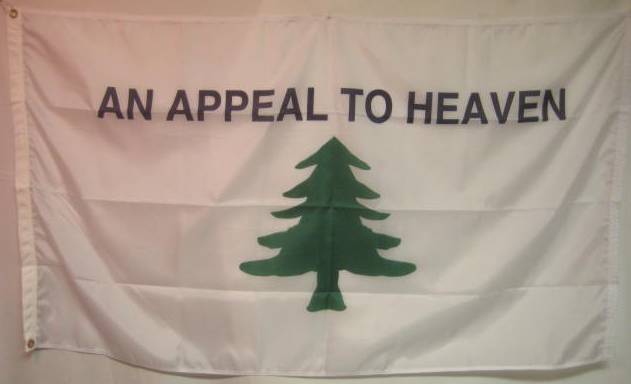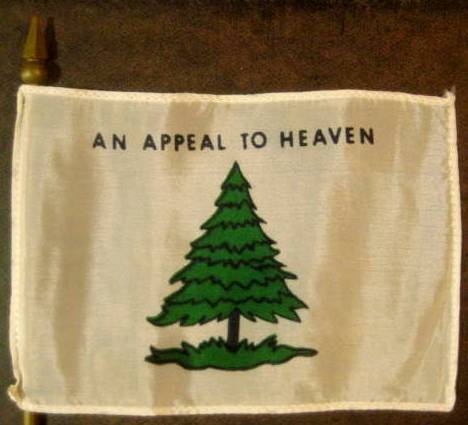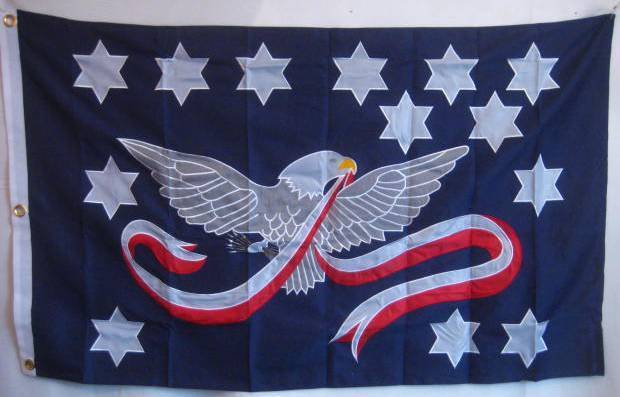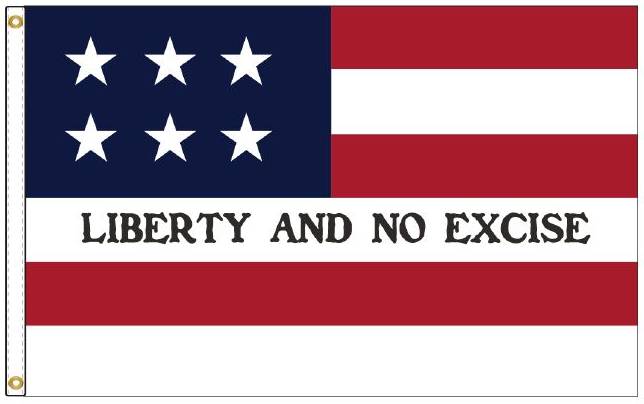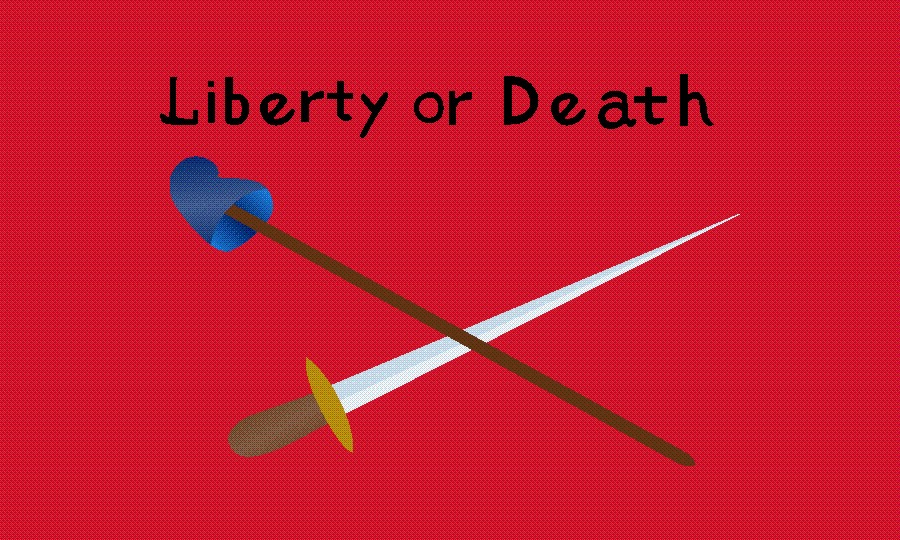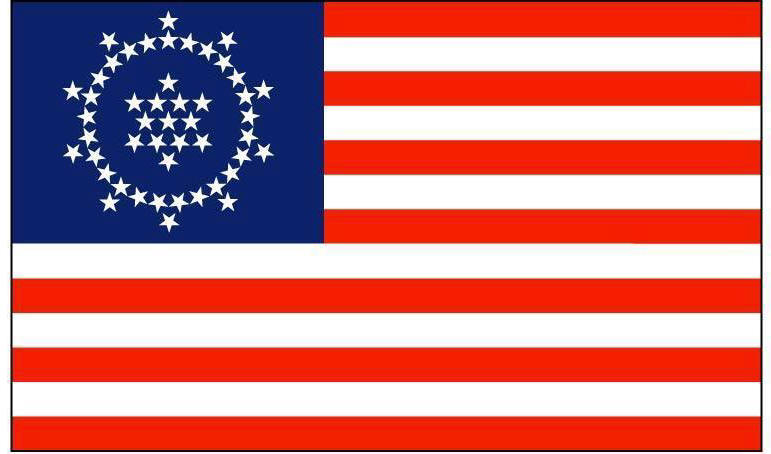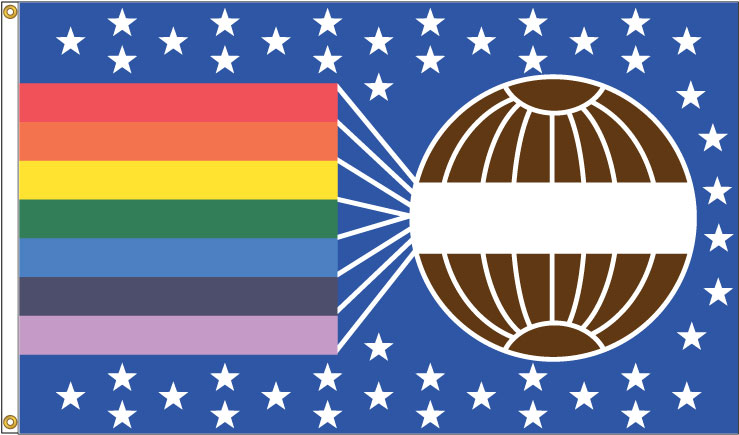Page Title: Historical Flags Civil War Flag North Civil War Flags South
Historic American Flag Star Configurations 4x6" Historic Desk Flags and Sets
|
Defiant Flags Bennington Flags Betsy Ross Civil War Flags North Historical Flags Washington Flags Alphabetic Listing By Flag Name 2x3' and larger only CLEARANCE PRICES ARE LIMITED TO STOCK ON HAND; Does not apply to custom flags. "Seconds" The following four flags did not print with the color value we expected. The color is not as heavy, and the penetration to the back of the flag not what we try to achieve. But they are way worth it for the price. Final sale, no returns. 3x5' Nylon with heading and grommets - LIMITED TO STOCK ON HAND |
|
#H135X Colrain Flag $9.95 3x5' Nylon with heading and grommets From Colrain Massachusetts, 1812 the first US flag to fly over a school house |
#133X Fort Mercer Flag $9.95 3x5' Nylon with heading and grommets; Revolutionary War Flag |
#134X Whipple Flag $9.95 3x5' Nylon with heading and grommets Whipple Flag History |
|
#H136X Matthew Perry Flag $9.95 Matthew Perry Flag History |
|
Alphabetic Listing:
|
|
|
|
Their motto: I refuse to be subjugated."
|
1st Continental Flag |
|
|
|
1st Virginia Regiment Flag #H199 $89.00 3x5' dyed nylon design with heading and grommets Authorized July 17, 1775 under the command of Patrick Henry. During the war it participated at Trenton, Princeton, Brandywine, Germantown, Valley Forge, Stony Point, and Yorktown
|
|
|
|
2nd New Hampshire Regiment Flag #H183 $89.00 3x5' Dyed nylon design Regiment serves at siege of Boston. Becomes part of the Continental Army when Washington assumes command.
|
|
|
|
4th Regiment US Colored Troops flag presented by the colored ladies of Baltimore. #H197 $99.00
3x5' dyed nylon design with heading and grommets Union Civil War Flag |
|
|
What do you say about guys who get up every day to fly missions knowing there were very bad odds that they would return. If your crew could complete 25 missions, the Army would let you go home. The trouble was, the average crew only survived about half that number of missions. The 8th AAF suffered 26,000 deaths out of the 350,000 officers and men. (The U.S. Navy suffered 37,000 deaths out of the 4.1 million in the WW II Navy.) According to Wikipedia, Marine Corps killed and missing were 24,511 out of 669,100 serving. These statistics are not meant to take anything away from The Navy or The Marine Corps. These numbers tell us something about the odds of surviving the withering fire in the skies over Europe. Their motto is "Deterrence through strength, global strike on demand."
|
Eighth Air Force Flag The Flag of the Eighth Army Air Force #H156 $69.00 3x5' dyed nylon design with heading and grommets;
image is visible on both sides.
|
|
|
|
10th Massachusetts Regiment Flag #H182 $89.00 3x5' dyed nylon design with heading and grommets
|
|
|
|
Also referred to as the Pan African Flag or Marcus Garvey Flag #H231S $89.00 3x5' SEWN nylon stripes with heading and grommets |
|
|
Alamo Flag #ALAMON $69.00 3x5' printed nylon with heading and grommets |
||
|
Anthony Wayne Flag (Greenville Treaty Flag)
|
Anthony Wayne Flag (Greenville Treaty Flag) #H198 $89.00 3x5' dyed nylon design with heading and grommets Presented to Miami Chief She-Moc-E-Nish by Wayne at the Treaty of Greenville in Ohio in 1795. The inscription reads "A. Wayne Commander in Chief."
|
|
|
Cotton Bedford Flag: Limited availability
|
#H214C Inquire for Pricing approx 36"x45" printed cotton with heading and grommets This is a one of a kind warehouse find. Cotton flags have almost entirely disappeared. This flag has not been made in cotton since the 1990's and it is not made now. We were able to acquire a closeout batch of new, old stock. Cotton flags are a wonder. The beauty of the older silk-screening process, the color values of the hues and the old school texture is from another era. They just don't make them like this anymore. The old silk-screening process on cotton did not achieve the same penetration as modern day printing on nylon. Accordingly, the color intensity on the back side is only about half as that on the front side. Cotton flags sometimes had problems with color fastness in the rain. Accordingly this flag is best for use indoors or outdoors on a clear day. We are selling it with the advisory that it should not be gotten wet or used in the rain. Enjoy it as a collectible, to carry in a parade or display on your porch on a clear day.
|
|
|
Bedford Flag
The Bedford Flag was carried by minutemen at Concord bridge on the first day of the Revolutionary War. It is on display at the Bedford public library |
Bedford Flag Nylon #H214 $72.00 Approximately 36"x45" printed nylon with heading and grommets |
|
|
Betsy Ross Flag |
||
|
|
The Brandywine Flag #H219 $89.00 3x5' Dyed Nylon with Heading and Grommets Our 3x3' square
size is in keeping with the original flag's 52x52". We've also made it
with non uniform, irregular stars that capture the original flag's hand
made look.
|
|
|
British Red Ensign, British Blue Ensign, British White Ensign British Ensigns
|
||
|
)
|
Bucks of America Flag #H124 $89.00 3x5' dyed nylon design with heading and grommets Revolutionary War regiment from Boston composed of African American soldiers. This flag was presented to the regiment by Governor John Hancock. The meaning of the initials "J.G.W.H." is unclear. A likely explanation is that they represent John George Washington Hancock, the Governor's son, who may have been the unit's "mascot". (Wikipedia
|
|
|
Bunker Hill Flag |
Bunker Hill Flag #H164 $69.00 3x5' printed nylon with heading and grommets |
|
|
|
California Republic Flag (Bear Flag) #H149 $69.00 3x5' printed nylon with heading and grommets If you love California or have any interest in the history of this cool old flag, you must check out The Bear Flag Museum web site devoted to it. It is a labor of love
|
|
|
|
Columbus Personal Flag #H167 $69.00 3x5' printed nylon with heading and grommets |
|
|
Commodore Perry Flag |
Commodore Perry Flag #H155 $69.00 3x5' printed nylon with heading and grommets |
|
|
|
||
|
Connecticut Navy Flag |
Connecticut Navy Flag #H220 $89.00 3x5' printed nylon with heading and grommets During the American Revolution ten states had their own navies. Here is one of them. Scroll down to see the Pennsylvania Navy.
|
|
|
Continental Flag #H168 $69.00 3x5' printed nylon with heading and grommets
|
||
|
Cowpens Flag
|
Cowpens Flag #H125 $69.00 3x5' printed nylon with heading and grommets |
|
|
Culpeper Flag
|
Culpeper Flag #H159 $69.00 3x5' printed nylon with heading and grommets |
|
|
Dansey Flag
|
Dansey Flag, 1st Delaware Regiment #H191 $89.00 3x5' printed nylon with heading and grommets
|
|
|
|
Deseret Flag The Flag of Utah 1851 #H201 $89.00 3x5' dyed nylon design with heading and grommets When the territory applied for statehood, the application failed, and it was not until 1896 that Utah was admitted as a state. The beehive, symbolizing Mormon sense of community and industriousness, is on the current state flag today. The design shown here, as are all depictions of this historical flag, are speculation based on newspaper descriptions of the flag. There is no known image of it. The number of stripes may not have been 13.
|
|
|
Largely based on your requests, we bring out historical flags that you don't see every day. And as a wise man once said, "flags are the shorthand of history." We found two more at the NAVA 39 conference in Nashville, October 2005. The following two flags are a direct result of what I learned there. Being at that conference was one of the most enjoyable flag experiences of my career. The story of these flags is a story of country and of family. They are symbols of the horrible divide confronting all Americans during The War Between The States. They are symbols of a time when fathers fought sons and brothers fought brothers. They tell the story of where we get the beloved term "Old Glory". Read the full story of William Driver's Old Glory
|
Driver's Flag Old Glory, William Driver's Flag #H95 $89.00 3x5' printed nylon with heading and grommets
|
|
|
Easton Flag As seen on the US Postage Stamp in the year 2000 series |
Easton Flag #H54 $89.00 3x5' printed nylon with heading and grommets |
|
|
|
||
|
Floyd Flag William Floyd Flag, Signer of The Declaration of Independence |
||
|
Fort Mercer Flag Historical Information
|
Fort Mercer Flag flown at Ft. Mercer, New Jersey, in 1777. #H133 $89.00 nylon with printed stars and stripes, heading and grommets. #H133S 3x5' Appliquéd stars and sewn stripes, nylon with heading and grommets. CUSTOM MADE, allow up to 9 weeks, Please INQUIRE
|
|
|
|
Fort Mifflin Flag #H120 $89.00 3x5' Printed 3x5' Nylon with heading and grommets “Valiant Defender of the Delaware, The Fort That Saved America" Learn more
|
|
|
Fort Moultrie Flag
|
Fort Moultrie Flag #H157 $69.00 |
|
|
|
Four Freedoms Flag #H206 Custom Sewn to Order $225.00 3x5' nylon with sewn stripes on both sides, heading & grommets Popular during WWII, designed to represent the 47 allied nations; its four symbolic bars stood for the four freedoms in FDR's famous speech: Freedom of speech, freedom of worship, freedom from want, and freedom from fear.
|
|
|
Check back regarding the availability of this flag
|
Fowle Flag Jonathan Fowle Flag Thought to be the first American flag to be saluted by a foreign warship. Mr. Fowle was a militia soldier stationed at "Castle William" in Boston. He is said to have presented this flag to the officers there in 1781. After The Revolution, the post was renamed Fort Independence. The first war ship to visit the new United States after hostilities ended was His Royal Britannic Majesty's ship "Alligator" in 1791. She saluted the American flag with 13 guns and the fort returned the salute. Some accounts say the flag saluted was the very one donated 10 years earlier by Jonathan Fowle. Our reproduction captures the home made charm of the original flag now part of the Massachusetts State House collection. Some refer to this flag as the Fort Independence Flag or the Castle William Flag. We prefer naming it after the soldier rather than the fort. Click here to read a more detailed article about the flag's history.
|
|
Francis Hopkinson Flag
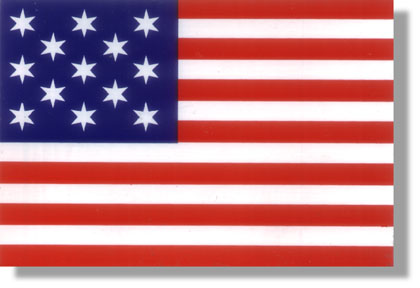 |
Francis Hopkinson Flag Click to see |
|
|
Frederick The Great Flag
|
Frederick The Great Flag #H151 $89.00
3x3' printed nylon with heading and grommets
|
|
|
Fremont Flag |
Custom Made to Order #H109 $107.00 3x5' Nylon with heading and grommets At last a correct version with the white canton. Western explorer, and first Republican Party presidential candidate in 1856, Union Major General John Fremont refused to rescind his order freeing slaves confiscated from secessionists. He refused to send freed slaves back to their owners. Lincoln fired him for this unauthorized move. His wife created this flag for him to take on his early 1840's California expeditions.
|
|
|
French Fleur-de-lis Flag blue
|
French Fleur-de-lis Flag blue #H169 $69.00 3x5' printed nylon with heading and grommets |
|
|
French Fleur-de-lis Flag white
|
French Fleur-de-lis Flag white #H170 $69.00 3x5' printed nylon with heading and grommets |
|
|
French Fleur-de-lis Flag 23
|
French Fleur-de-lis Flag 23 #H171 $69.00 3x5' printed nylon with heading and grommets |
|
|
French Royal Standard Flag
|
French Royal Standard Flag #H150 $89.00 3x5' Nylon with heading and grommets |
|
|
Gadsden Flag |
Don't Tread On Me Flag (The favorite Tea Party Flag) |
|
|
The Gansevoort Flag
|
The Gansevoort Flag #H192 $89.00 The Gansevoort Flag, 3rd New York Regiment; Served at Ft Stanwix, Sullivan Campaign, part of the Morristown winter encampment of 1779-1780 and in the American invasion of Canada. Some say this flag became the basis of the design for the modern New York State flag. 3x5' printed nylon with heading and grommets
|
|
|
George Rogers Clark
Flag #H154 Please inquire 3x5' Nylon with heading and grommets with sewn stripes |
||
|
Gonzales Banner "Come and Take It" Flag 2x3' Nylon With Heading & Grommets #H282 $49.00
3x5' Nylon With Heading & Grommets #H28 $69.00 From Oct. 2,1835 in the history of The Great Lone Star State of Texas! |
Santa Anna had abolished the Mexican constitution of 1824 and made himself Dictator there. In 1835, he sends forces to reclaim a cannon in Gonzales. Can't have a cannon out among the people you are trying to control! On October 2, Texan volunteers unfurl this flag and fire the first shot in their war for independence from Mexico. Good old American defiance! At the time, Texas was a Mexican province. That December, Texans take over the nearby Alamo and allow the defeated Mexicans there to leave. However, in February 1836, 5,000 Mexican troops arrive led by Santa Anna himself against whom 182 Texans and Tejanos, Texans of Mexican descent, hold out for 10 days before drawing their famous "line in the dust" and perishing to the man. A handful of women and children are spared. The Gonzales Banner is an emotional and spontaneous expression of a handful of Texans standing up for their freedom and democracy. | |
|
Grand Union Flag
|
Grand Union Flag #H158 $69.00 3x5' printed nylon with heading and grommets "The name Grand Union was retroactively created by 19th-century historians to describe the Continental Colors" quoted from end note #15 in Peter Ansoff's article "A Striped Ensign in Philadelphia in 1754" published in RAVEN Vol 15 by NAVA. Also of interest is his end note #2 from the same paper. "There is no official record of when, or by whom, the Continental Colors was created; however, the earliest known description is believed to have been written in early December, 1775." |
|
|
Click for More Union Civil War flags
|
Grant and Colfax Campaign Portrait Flag #H196 $99.00 3x5' dyed nylon design with heading and grommets 1868 - Grant's running mate was Schuyler Colfax of Indiana. They defeated Horatio Seymour of New York and Francis Blair of Missouri in an electoral college landslide. In this era it was common for political candidates to put portraits and slogans on flags.
|
|
|
Great Star Flag (20 star version)
|
Great Star Flag #H108 $69.00 3x5' printed nylon with heading and grommets There were many versions of "Great Star" flags in which the star pattern itself formed a star. |
|
|
Green Mountain Boys Flag |
Green Mountain Boys Flag #H163 $69.00 3x5' printed nylon with heading and grommets |
|
|
Guilford Courthouse Flag |
Guilford Courthouse Flag #H126 $69.00
3x5' printed nylon with heading and grommets
|
|
|
|
The Hanover Associators Flag #H144 $89.00 3x5' Brilliantly dyed nylon with heading and grommets A militia formed 1774 "that in the event of Great Britain attempting to force unjust laws upon us by strength of arms, our cause we leave to Heaven and our rifles." These were Pennsylvania country boys with attitude. To them, the right to bear arms was decidedly not about duck hunting. Lest anyone miss their point, the rifle and their motto "Liberty or Death" adorned their flag.
|
|
|
Hudson Fulton Champlain Quadricentennial Flags Explore New York 400 Flag from 2009 This flag was used to commemorate three landmark passages in New York State and American history. The Quadricentennial commemorated the explorations of Henry Hudson and Samuel de Champlain in 1609, as well as the 200th anniversary of Robert Fulton’s first steamship voyage along the Hudson River.
|
3x5' Outdoor Nylon Flag finished with canvas heading and brass grommets. #CUSHF Closeout $5.95 |
|
|
|
Independent Company Newburyport Flag #H203 $89.00 3x5' dyed nylon design with heading and grommets Newburyport, MA was the home of Matthew Thornton, a signer of The Declaration of Independence. The militia's flag depicted 13 mailed hands each holding a link in a chain symbolically forming a never ending circle of unity in a common cause. |
|
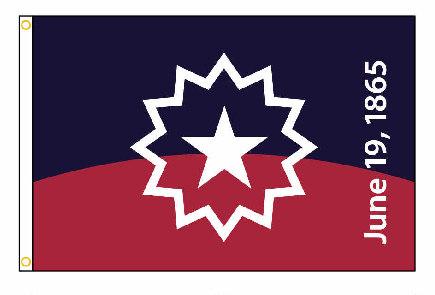
|
Juneteenth Flag #H237 $69.00 3x5' nylon with heading and grommets
|
|
|
Kings Colors Flag 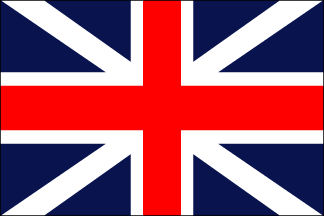 |
Kings Colors Flag #H12723 $39.00 2x3' printed nylon with heading and grommets
#H127N $89.00 3'x5' printed nylon with heading and grommets
|
|
|
Lewis And Clark Era Flag |
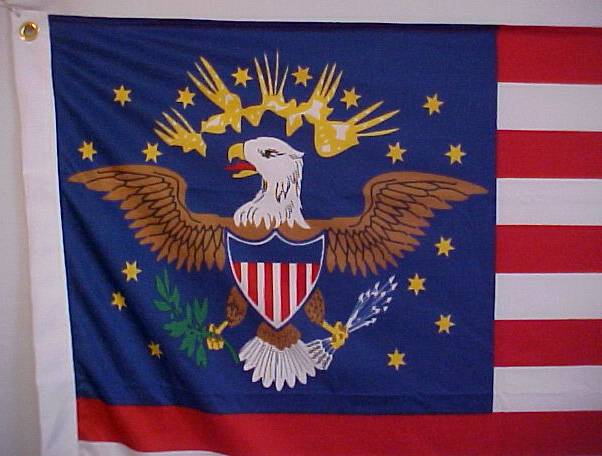 It has
17 stars because by 1803 four states had joined the original 13 in the Union –
Vermont (March 4, 1791), Kentucky (June 1, 1792), Tennessee (June 1, 1796), and
Ohio (March 1, 1803); it shows an incongruous number of 15 stripes because
specifications for the number of stars and stripes were not finalized by
Congress and President James Monroe until 1818. It has
17 stars because by 1803 four states had joined the original 13 in the Union –
Vermont (March 4, 1791), Kentucky (June 1, 1792), Tennessee (June 1, 1796), and
Ohio (March 1, 1803); it shows an incongruous number of 15 stripes because
specifications for the number of stars and stripes were not finalized by
Congress and President James Monroe until 1818. |
Lewis and Clark Flag #H107 $89.00 3x5' printed nylon with heading and grommets 17 stars, 15 stripes. There were many variations of flags throughout the 1800's. This is a typical design in use from 1803-1812. The Lewis and Clark expedition ran from 5/14/1804 - 9/26/1806. |
|
Royal Standard of Spain Flag
|
(Also called Lions and Castles) Royal Standard of Spain Flag #H179 $69.00 3x5' printed nylon with heading and grommets Also called Lions and Castles |
|
|
Lord Baltimore Flag
|
Lord Baltimore Flag #H175 $69.00 |
|
|
|
Monmouth Flag #H213 $89.00 3x5' dyed nylon design with heading and grommets This is another flag that I have added based on a customer request. It was carried by American forces at the Revolutionary War Battle of Monmouth in New Jersey June 28, 1778
|
|
|
Morgan's Rifles
|
Morgan's Rifles, 11th Virginia Regiment commanded by Daniel Morgan #H190 $89.00 3x5' printed nylon with heading and grommets
|
|
| Flag Of The New Orleans Greys From The Alamo | ||
|
WWII Matthew Perry Flag
See that flag? Read its story
|
Perry Flag #H136 $89.00 3x5' printed nylon with heading and grommets
|
|
|
Philadelphia Light Horse Flag
Philadelphia Light Horse 4x6" Desk Flag $6.00, closeout item limited to stock on hand |
Philadelphia Light Horse Flag #H176 $72.00 3x5' printed nylon with heading and grommets
|
|
|
Pine Tree Flag |
Pine Tree Flag #H177 $69.00 3x5' printed nylon with heading and grommets |
|
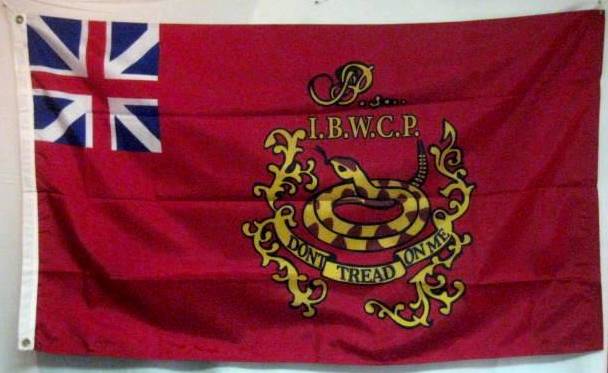 |
Proctor's Battalion Flag #H184 $89.00 3x5' printed nylon with heading and grommets
Close Up View
|
|
|
Republican Party Flags "Bleeding Kansas." I find the 10 years leading up to The War Between The States more interesting than the war itself. Imagine the type of sectional violence that makes us shudder when we see it around the world today. Back in the 1850s a mini civil war was going on in Kansas. The territory was poised to become a state. Would she enter The Union as a free or slave state? Pro slavery interests, free soilers, and abolitionists all rush to settle and control the state's future. The collision of these forces leads to The Pottawatomie Creek Massacre lead by John Brown. There is the Sacking of Lawrence Kansas lead by a sitting US Senator. Two competing state governments are formed and there are two different competing state constitutions. "Popular sovereignty", pushed by Stephen Douglas, seeks to allow the voters to decide the slavery issue. In 1856 the Republican Party appears for the first time in a national election with presidential candidate John C. Fremont. Kansas was a major hot button issue in that race. The political balance of congress was at stake. The Republican platform calls for no expansion of slavery into the territories. The Republicans campaign against the expansion of slavery. The Democrats warn that the Republicans are a radical sectional interest whose victory will lead to the destruction of the fragile Union. Fremont is defeated by James Buchanan. The Republicans would come back four years later and win with Abraham Lincoln upon whose victory the Union would indeed break apart. These are two flags used to support Fremont at rallies. Don't miss Fremont's personal flag.
Admit Me Free Flag #H153 $89.00 3x5' dyed nylon with canvas heading and brass grommets This flag was used in a Pennsylvania rally. The large star represents the hope for entry of Kansas as a free state.
|
Free Kansas Flag #H152 $89.00 3x5' dyed nylon with canvas heading and brass grommets Fremont's running mate was William Dayton of New Jersey. This flag was used by Fremont supporters in Ohio.
|
|
|
Rhode Island Regiment Flag
|
Rhode Island Regiment Flag #H187 $69.00 3x5' printed nylon with heading and grommets The Rhode Island Regiment was a the first all black unit in America. It distinguished itself during The Revolutionary War. Among other action, it took part in the assault of Redoubt 10 at Yorktown. Just search its name and check it out. |
|
|
|
The Rough and Ready Flag #H188 $89.00 3x5' nylon with heading and grommets The first established settlement in Rough and
Ready was made in the fall of 1849 by a mining company from Wisconsin known as
the Rough and Ready Company. Their leader, Captain A. A. Townsend, named the
company after General Zachary Taylor
|
|
| Teddy Roosevelt Rough Riders Flag Page | ||
|
Royal Standard of Spain Flag
|
Royal Standard of Spain Flag (Also called Lions and Castles) #H179 $69.00 3x5' printed nylon with heading and grommets
|
|
|
|
Russian American Company Flag #H88 $72.00 3x5' printed nylon with heading and
grommets Lasting
from 1799 to 1881, the company's flag had many slight variations over its
history. |
|
|
St. George's Cross Flag |
Saint George's Cross Flag #H180 $89.00 3x5' printed nylon with heading and grommets |
|
|
General Schuyler's Flag
|
Schuyler's Flag #H161 $89.00 3x5' Dyed polyester design finished with canvas heading and brass grommets General Schulyer Philip John Schuyler served as a captain for British forces in the French and Indian war. Afterwards his estate grows into a giant agricultural, lumber and milling operation including slaves and thousands of acres. He serves in the NY colonial assembly where he becomes an outspoken opponent of colonial rule. Elected to the Second Continental Congress he serves until he is appointed a Major General in the Continental Army. He is commander of the initial defense against the British invasion of NY by Burgoyne whose initial success leads to Schuyler being replaced by General Gates who accuses Schulyer of dereliction of duty. Demanding a court martial, Schulyer is vindicated but resigns. Schulyer has a famous son-in-law - Alexander Hamilton.
|
|
|
Serapis Flag |
Serapis Flag #H102 $69.00 3x5' printed nylon with heading and grommets |
|
|
Sheldon's Horse, The 2nd Continental Light Dragoons
|
Sheldon's Horse, The 2nd Continental Light Dragoons, #H189 $89.00
3x5' printed nylon with heading and grommets
|
|
|
Spanish Cross Flag
|
Spanish Cross Flag #H181 $69.00 3x5' printed nylon with heading and grommets (Cross of Burgundy) |
|
|
Royal Standard of Spain Flag
|
Spanish Royal Standard (Also called Lions and Castles) #H179 $69.00 3x5' printed nylon with heading and grommets
|
|
|
Spanish Royal Ensign (A Naval Flag) "The Red Lion" Flag #H238 $89.00 3x5' printed nylon with heading and grommets This from Flags of the World web site: Image shows the arms of the Spanish Kings 1580-1598 and 1621-1700 with the "inescutcheon" of Flanders and Tyrol. The arms of Bourbon also shown.
|
||
|
Flags of the National Women's Party 19th Amendment Ratification Banner
|
||
|
Sullivan's Flag |
Sullivan's Flag #H162 $89.00 3x5' Dyed nylon design finished with canvas heading and brass grommets General John Sullivan, a lawyer of New Hampshire, member of the First and Second Continental Congress and militia leader early in the war. Made Brig. General for the siege of Boston. Later appointed by Washington to command the invasion of Canada. Next made one of the commanders in the horrible American defeat on Long Island where his forces were attacked from the rear and front simultaneously. After hand-to- hand fighting in which his command was almost wiped out, he was captured. Released in a prisoner exchange, he was with Washington again at Trenton and Princeton. Later commanded the scorched earth campaign against the Iroquois in western New York.
| |
|
Taunton Flag |
Taunton Flag #H160 $69.00 3x5' printed nylon with heading and grommets |
|
|
|
Tubman Flag Harriet Tubman Flag #H232 $98.00 Limited to the one in stock This is of course a flag that never existed but she is one of our most selfless and heroic historical figures. I just figured she deserved to have her name placed in nomination. I only made one of these as a custom flag.
| |
|
|
||
|
|
United East India Company Flag This flag has been discontinued, but I keep it posted for the interesting historical information below. | |
|
|
Vermont Flag Historic Flag of Vermont October 20, 1837-June 1, 1923 #H200 $89.00 3x5' dyed nylon design with heading and grommets Vermont became a state in 1791 but did not adopt a flag until 1804. In 1837 the design shown here became the new flag.
| |
|
Viking Flag #H30 $69.00 3x5' printed nylon with heading and grommets
|
||
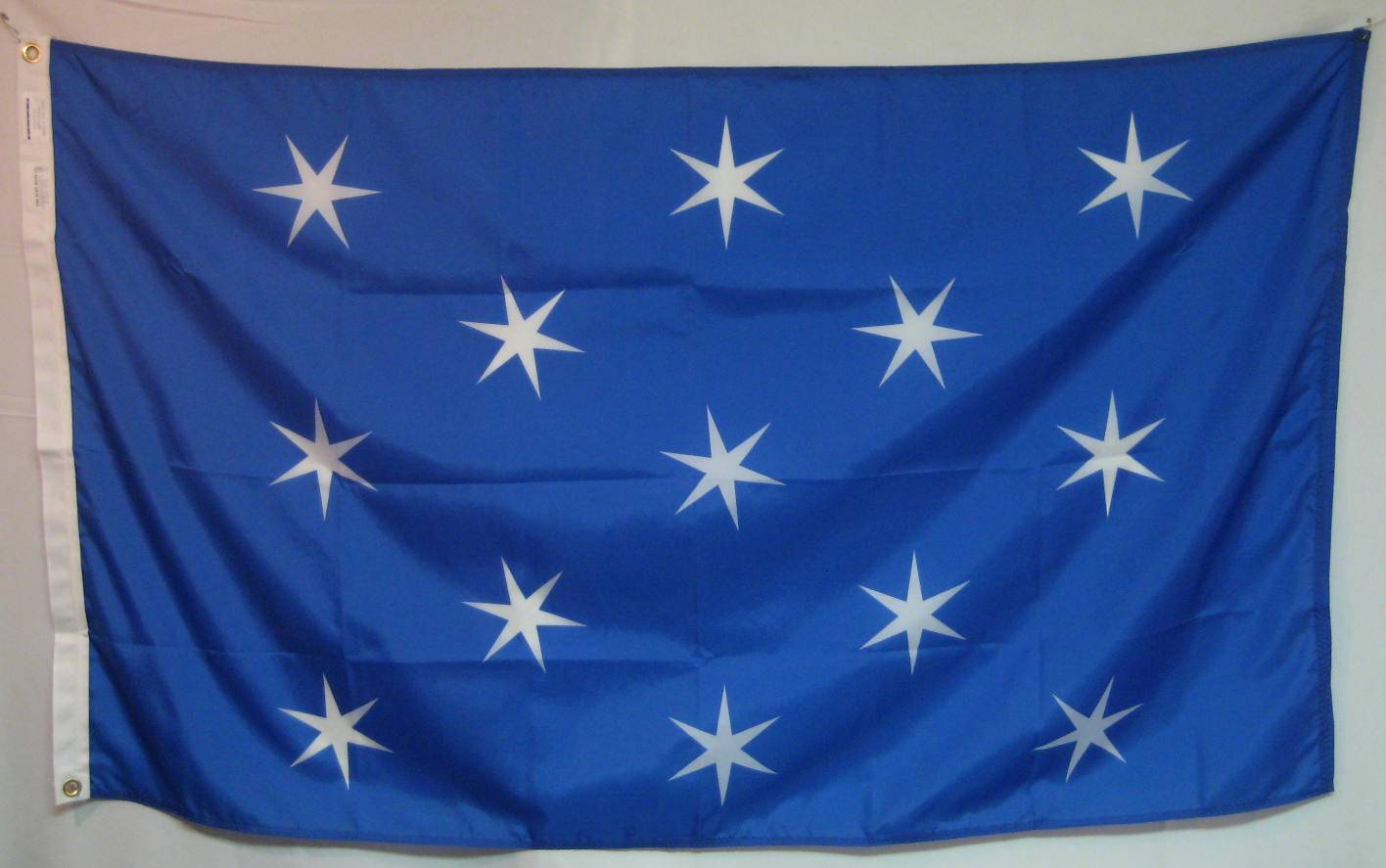
|
Washington's HQ Flag
George Washington's Personal Flag A Unique Replica of American History. Light blue w/ unusual 6-pointed stars. An original Washington's Headquarters Flag is at Valley Forge National Historic Site in Pennsylvania
Officially called The Commander-in-Chief's Guard, the unit was authorized in 1776.
|
|
|
Washington's Cruisers Flag Version 1
George Washington created a squadron of six nimble cruisers prior
to the existence of the Continental Navy. Under this flag, they harassed British
ships and stole their supplies. Designed by his secretary, it was then adopted
by the Massachusetts State Navy. The phrase is from a John Locke publication.
|
Washington's Cruisers Appeal To Heaven Flag Version 1 #H129 $89.00 3x5' printed nylon with heading and grommets As with most historical flags from the Revolution, there is no original Washington's Cruisers still existing from the period. We offer two different possible designs.
|
|
|
Washington's Cruisers Flag Version 2
Washington's Cruisers Flag 4X6"
$2.00 LIMITED TO STOCK ON HAND
|
Washington's Cruisers Flag Version 2 #H129EX $89.00 3x5' printed nylon with heading and grommets As with most historical flags from the Revolution, there is no original Washington's Cruisers still existing from the period. We offer two different possible designs.
|
|
|
|
Whiskey Rebellion Flag (Traditional) #H33 $89.00 3x5' SEWN design, polyester with heading and grommets This is not a light weight printed polyester flag. Looks and feels like cotton. It is a stunningly beautiful execution of this elaborate design from an early test of our young nation's constitution and Federal government. Click the images below to see details of the beautiful workmanship. For historical accuracy it should be noted that this flag, which survives in a tavern in Pennsylvania, is widely said to be a flag of the Whiskey Rebels. Others dispute that notion. The scholarship of the matter is unsettled and it could even be a post rebellion flag. At any rate, it is a stunning flag from the first decade of our national existence and a terrific American flag design.
|
|
|
|
Whiskey Rebellion Flag (Likely) #H211 $89.00 3x5' printed nylon design with heading and grommets Many of the historic flags you see on my web site are the results of suggestions from people who visit here. When I am presented with a good story, good research and a cool looking flag, I like to get it made so here it is. The great-great-great-grandson of a "whiskey rebel" who stood trial for being a participant back then brought this suggestion to us from the historical research he has done on the matter. The slogan "Liberty and no Excise" in known to have been on multiple rally items associated with the rebellion and there is strong reason to believe that it appeared on this flag. The six stars and stripes represent the five Pennsylvania and one Virginia counties under rebellion.
|
|
|
|
White Plains Flag #H145 $89.00 3x5' Brilliantly dyed nylon with heading and grommets The message to the British was unmistakable. The blue cap hanging on the staff is a "liberty cap." It goes back to ancient Rome where it was called a "Phrygian cap." A master would give the cap to a freed slave as a symbol of his new found freedom. The Phrygian cap was a common symbol in colonial politics. The sword speaks for itself. "These colors were captured by the Hessians either on August 27, 1776, at the Battle of Long Islands, or Oct. 28, 1776, at the Battle of White Plains. A German account, listing the earlier date, belittles the skill of the American troops who surrendered under this flag, but it was only a few weeks later that the same Hessians under Colonel Rall surrendered to General Washington at Trenton, Dec. 26, 1776. The design on the flag is taken from an undated engraving." Source: "Flags to Color from the American Revolution." |
|
|
48 star Whipple Flag #H134 $89.00 3x5' dyed nylon finished with heading and grommets Historical information by Dave Martucci The 48-star version of the Whipple flag is the only one ever to go into production. A 46-star design is illustrated in Wayne Whipple's 1910 book but that same book has the 48-star version on the cover. Whipple's book makes reference to the design using the name "American History Flag." He did not call it the "peace flag." Whipple's book discussed the flag in terms of design and his idea was that the central 13 stars (in a form taken from the Great Seal of the USA [look at the back of a $1 bill]) represented the States that formed the Union, then a ring of 25 stars representing the 25 States that were admitted in the first 100 years of the country and then a ring of 10 stars for the 10 States that joined in the second hundred years (up to 1912), therefore he called it the History Flag. He went on to challenge all the boys and girls who read his book to come up with their ideas for a meaningful star arrangement.
The 48-star
version made it into commercial distribution because a major flag producer like John Dettra was behind
it. This version is the only
one to be found. Throughout the internet, one can find photos of 48 star
versions in
auctions and elsewhere. But I see no 46-star versions. It seems that the 46-star version was one of those flags that gets designed but never actually
gets made and distributed in a meaningful way.
|
||
|
|
||
|
The Development of Old Glory: By law a star is now added to the American flag on July 4th following the admission of a state to the Union. The following table traces the changes in the US flag since 1777. While many believe the first official flag was the "Betsy Ross" with 13 stars in a circle, many feel it was a "spread star" pattern as shown. It is still quite proper to fly one of these wonderful "Odd Star" flags. Each is a "legal" flag simply representative of an earlier era and they never become "obsolete." They remain entitled to the same respect as our current day "Old Glory." Educational and fun to fly · Thoughtful and unique gift ideaGreat for historical homes, sites and schoolsMany people with historic homes enjoy flying an historic flag that is from the same period as their home. |
We thank flag scholar Dave Martucci for the suggestion and for teaching us the history of this flag. Dave has an extensive series of flag pages. Just google "Vexman". Included is an antique flag appraisal and assessment page.
By Dave Martucci
When Boston was founded in 1630, it was immediately recognized that the city was somewhat vulnerable to attack by sea. Within a few months of the first settlement, a decision was made to fortify one of the islands in the harbor, one that stood immediately next to the main shipping channel. This fortification, originally of logs, was named Castle William and it became the principal military outpost of the Bay colony.
When the British evacuated Boston in 1776, they destroyed the fortifications. The Americans immediately began to re-fortify Castle Island. They again named the fort Castle William and by the close of the Revolutionary War it was regularly garrisoned with local militia. In 1781, it is reported that a militia soldier stationed at Castle William by the name of Jonathan Fowle presented the officers of the fort with a large American Ensign of 13 stars and stripes measuring approximately 6 feet by 10 feet. No one knows why Mr. Fowle made this presentation; some speculate he had some connection to a flag maker, but no one knows for sure. His descendants did not say why, only that it happened.
Custom of the times only required the display of the flag when foreign ships entered the channel leading past the Castle. It would be hoisted as soon as a vessel was spotted. An arriving foreign ship was required to hoist their flag and fire a salute, after which the garrison would briefly dip the American Flag and return the salute. Dipping the US Flag is no longer done.
The number of guns to fire was the subject to some controversy since the customs of the times indicated the salute to a Royal Vessel was supposed to be 21 guns, while the salute to a Republican Vessel was four guns less than offered (republicans were supposed to fire first at sea). Americans only asked for 13 guns, one for each State, although the controversy escalated in the mid-1820s when the number of States increased past the 21 mark.
Because the flag was seldom displayed, it had a long life, especially compared to today when the tendency of Americans is to hoist the flag and leave it flying until it wears out. Ten years after it was presented, this flag may have become a part of American History.
Following the end of the American Revolution, a Treaty of Peace was signed in late 1783 between the US and Great Britain that recognized American Independence. Although some British merchant vessels very soon arrived in American waters, no British "Man-of-War" arrived until May 2, 1791 when His Royal Brittanic Majesty's ship "Alligator", Isaac Coffin, Captain, arrived in Boston harbor from Halifax. While passing the Castle, the "Alligator" saluted the American Flag with 13 guns, which was promptly returned by the garrison of the fort. Some reports indicate the flag that was flying on the Castle was the same flag that had been presented ten years earlier by Jonathan Fowle.
This was the first instance of a Royal British vessel saluting the American Flag following the Treaty of Peace, thereby certifying British recognition of American Independence. On May 3, 1791, the newspaper "Colombian Centinel" published at Boston said of the event: "This mutual attention to powers, who were lately hostile to each other, shows the superior liberality of the age in which we live, and proclaims to the world the verification of that memorable instrument, the Declaration of Independence, in which our political fathers declared that they 'should hold the king and subjects of Great Britain as they did the rest of the world, -- enemies in war; in peace, friends.'"
Some accounts in the family speculate this flag was carried by militia troops in the War of 1812, but the size of the flag, its manufacture details, and the customs of the times make this unlikely. Castle William was ceded to the United States government in 1793 and subsequently renamed Fort Independence. The island retained the name Castle Island. In the 1840s, a new fort was constructed on the foundations of the old one, made of granite and laid out in a 5-pointed star shape. The island is no longer an island, having become a peninsula of South Boston by land fill. Today it is a museum open daily to the public in the summer months. The flag has been preserved over the centuries and now is a part of the Massachusetts State House Flag Collection.
For those of you who are not familiar with the
North American Vexillological Association (NAVA), if you love flags you are really missing something by not being a member. I have been one since the late 1980's and have long enjoyed my membership. There is a regular newsletter (more of a small magazine really) full of educational flag news and scholarly articles. There is a more substantial annual jury reviewed journal. There is contact with flag buffs from all over the world. There is a wonderful web site. Joining this organization and getting the newsletter would be an educational and enriching experience for anyone. It is terrific for anyone interested in history, geography, or graphic design. It would be a stimulating membership for kids. Members come from all ages and all walks of life. At the NAVA conference in Nashville there was medical doctor from France, a government protocol official from Quebec, a few lawyers, a high school custodian, and several authors. I will soon post some pictures from that event. By the way, I plug NAVA as an interested member of the organization. NAVA does not endorse The Flag Guys ® or any other business. It has numerous other commercial members.
Fort Mifflin
Quoted
verbatim from the Fort Mifflin web site: "Located
on the scenic Delaware River, Fort Mifflin was originally built by the British
in 1771. It is the site of the largest bombardment the North American continent
has ever witnessed. In 1777, during the American Revolution, a valiant five-week
battle took place when the British Navy attacked Fort Mifflin on Mud Island. The
British had the garrison of approximately 400 Continental soldiers surrounded
from three sides. Attempting to open the supply line for the British Army
already in the Rebel capital of Philadelphia, the British shot over 10,000
cannonballs at the Fort, causing the garrison to eventually evacuate. Over 150
Continental soldiers died as a result of the battle and led Thomas Paine to
write: “The garrison , with scarce anything to cover them but their bravery,
survived in the midst of the mud, shot & shells, and were obliged to give up
more to the powers of time & gunpowder than to military superiority.” This
allowed General Washington and the Continental Army to repair to their winter
quarters in a place called the Valley Forge. Too late in the season for British
General Howe to chase them, the garrison at Fort Mifflin thus extended the war
and allowed the American army time to regroup until the spring of 1778.
During the Revolutionary War the garrison at Fort Mifflin was ordered by General
George Washington to hold off the British Navy so the Continental Army could
make its way to their winter encampment at Valley Forge. Washington wrote that
the defense of the Delaware River was “of the utmost importance to America.” be
told
When reproducing historical flags, sometimes there is no 100% way to know their exact design. Absent an actual flag still surviving, their exact appearance is often a matter left up to interpretation. For our my research I turned to Dexereaux Cannon, author and flag scholar who writes his opinion below. As you can see, there is a case to be made for more than one stripe arrangement of the Mifflin flag. Our is of the version used at the fort today and known to have been used by American ships of the period.
<<My source for information on these flags is
Standards and Colors of the American Revolution by Edward W. Richardson.
The source for the flags of both Fort Mercer and Fort Mifflin is a sketch made
in October 1777. There are no surviving flags, nor any better depiction from an
original source than that shown in these prints.
In the case of the Fort Mifflin flag, as best as
can be made out from the sketch as reproduced in Richardson’s book, the flag’s
overall dimensions are 1 x 2. In Richardson’s book, and other sources, including
Fort Mifflin, show the stripes as
RED/WHITE/BLUE/RED/WHITE/BLUE/RED/WHITE/BLUE/RED/WHITE/BLUE/RED, so that seems
to be the accepted form, and it does correspond to a 1778 painting showing the
same flag flown on four captured American merchant ships, and to the stripes on
the Grand Union flag flown by the Lexington in 1777. But if I were making an
independent judgment based purely on what I see in the 1777 sketch, I would
shown it with stripes as WHITE/RED/WHITE/BLUE/ WHITE/RED/WHITE/BLUE/
WHITE/RED/WHITE/BLUE.
So, to recap, if I were making a replica of the Fort Mifflin flag it would be 3
x 6 feet, with WHITE/RED/WHITE/BLUE/ WHITE/RED/WHITE/BLUE/ WHITE/RED/WHITE/BLUE
stripes, but I would struggle with making it the usually accepted
RED/WHITE/BLUE/RED/WHITE/BLUE/RED/WHITE/BLUE/RED/WHITE/BLUE/RED stripes for
purposes of commercial acceptability, and because that combination is documented
as used by American ships of the period.<<
Then this further update I received 5/28/08 from a historian at the site on the history of the Fort Mifflin flag:
>>Good Morning,
You have an excellent site and I applaud your flag information accuracy or at
least the attempt to get it correct as best that you can.
Which brings me to the question at hand, the accuracy of the Fort Mifflin flag
and its origins. Your expert, Dexereaux Cannon is correct in his deduction that
the flag would be, (in) his estimation,
WHITE/RED/WHITE/BLUE/WHITE/RED/WHITE/BLUE/WHITE/RED/WHITE/BLUE. I believe he is
marking his opinion on the John Paul Jones, Franklin or "Serapis" flag that is
mistakenly described as the "first American flag recognized by a foreign power"
when the Dutch fleet were ordered it be "recognized on the high seas as the
colors of a foreign country." Or that he feels that since Fort Mifflin's sister
fort, Fort Mercer had a flag that had blue stripes rather than red, the
distinction by Mr. Cannon can be made about the Fort Mifflin flag. But the Fort
Mifflin flag flew almost a year before Fort Mercer was even manned in the fall
of 1777, so it was the first of the two that appeared.
Our information about the Fort Mifflin flag comes to us from several sources
that detail the flag used by the Pennsylvania Navy, which operated on the
Delaware River in 1777 around Fort Mifflin as a "thirteen striped flag of
alternating red, white and blue stripes." It only serves to believe that Fort
Mifflin would have adopted such a flag as their own and we have examples of one
original flag that survived that shows these colors. One of the sources comes
from the Pennsylvania Navy flags makers records, as well as the U.S. Government
of the time. One, Elizabeth Griscom Ross Claypoole, better known to us as Betsy
Ross. Ross may not have made the first flag as legend suggests, but strong
evidence that Ross did in fact make flags for the government includes a receipt
for her making "ship's colours" for the Pennsylvania Navy in May 1777, as well
as one large garrison flag for the troops on "Mud Island Battery," better known
in history as Fort Mud or Fort Mifflin. It is also probably the source of the
legend that was trumped up certain members of her family in 1876 to cash in on
our country's Centennial celebration, which they did mightily.
Lastly, that Mr. Cannon interprets the drawing from the siege of Fort Mifflin in
the fall of 1777 as having WHITE, RED, WHITE, BLUE, WHITE, RED, WHITE, BLUE,
WHITE, RED, WHITE, BLUE escapes my eyes. I have seen the actual, original water
color drawing by Major John Montressor who was on one of the ships bombarding
the Fort and you can clearly see that the stripes are thirteen; red, white, blue
alternating stripes.
All that said, things of this nature are always up to interpretation. As an
historian I have learned that you do not use two words; Never and Always. No
sooner than these words are used then a another historian will come along in
preceding years and prove you incorrect. Such is the case with Mr. Cannon and I
someday.
Bravo Zulu on a job well done and keep up the good work.
Lee Patrick Anderson
Executive Director
Fort Mifflin on the Delaware
Fort Mifflin & Hog Island Roads
Philadelphia, PA 19153>>
The Viking Flag , thanks to Michael Faul, editor of Flagmaster, The Journal of The Flag Institute
" >> Pretty soon you are going to be sick of hearing from me. That is especially so with regard to the present message. Have now had a chance to view your historic listings in detail. Sorry to say, but I must challenge three of them. The first is the Viking raven flag. Yes, I know that Erik the Red (or his son, Lief Eriksson) reached "Vinland" in the mediaeval period, long before Columbus. Neither of them brought this flag with them. Sorry, but that's a fact. It is a common misconception that the Viking raven flag was a kind of national flag in the modern sense. It was no such thing. The design, which probably varied considerably, is recorded only five times, and in each case in connection with a specific leader. In one case the flag was "magic" and the raven appeared only when the flag flew in battle. Yes, well, maybe ..... Certainly the only case of the flag being recorded outside the British Isles is a reference to Harald Hardrada, King of Norway, having such a flag, known as "Landwaster". Fat lot of good it did him, as he was defeated and killed at Stamford Bridge, just outside York, in 1066. That is the last record of any of these flags.""
My reply: >>So, thank you for your patience. Remember, I am never bothered by challenges to any flag. Instead I welcome any chance to get it right. With your permission I will even post your comments and credit you by name and provide a link to The Flag Institute. To your comments: I make no claim for the so called Viking flag to be anything in particular. It is just a cool looking flag that is available here and its distribution is not of my doing. I will be glad to offer it as what you now point it out to be. It has been available for years from many sources. I just try to offer every flag I can. By the way, I make no claim to be a vexillologist, a scholar or a historian. I am a huge history buff and flag fan. I do consider myself to be a professional flag merchant. As the latter, I do try to provide accurate information and products.
Many of the historic flags in my product have been brought out by me for the first time as far as I can tell. Unlike flags such as the Viking Raven, those flags I bring out are based on what I consider to be careful and convincing research done by others whom I credit. Most of those flags are brought to me by others who make me aware of a cool flag with a compelling story behind it. Wait until you see what is coming out in January.>>
United East India Company thanks to Michael Faul, editor of Flagmaster, The Journal of The Flag Institute
>>The flag you show, of the United East India Company was indeed used, in the East Indies and at the Cape of Good Hope. Its only appearance in American waters, was for the original survey of the coasts of modern Long Island, New York, New Jersey and the Delaware river in about 1620.
In 1623 (if I remember correctly) the Dutch founded their settlement of New Amsterdam (today New York) when Peter Minuit bought Manhattan Island for some beads - or so the story goes. Minuit was in the service of the GWC, the Chartered West India Company. It was this company which set up New Amsterdam and also founded Dutch settlements in the Caribbean, the modern Dutch East Indies (or whatever it is they are calling themselves now!).
So the EAST India Company flag never flew over NewYork, but it was seen in the earlier survey. The flag hoisted over the settlement of New Amsterdam was that of the WEST India Company, the same design as the former flag but with the initials GWC combined in the centre.
Just to clarify matters a bit more (or confuse you completely!) The United East India Company was so-called because it was an association of six Dutch chambers of commerce in different cities. Each Chamber in the company had its own flag, in the livery companies of the particular city, with the VOC monogram surmounted by the city's initial letter. This was never the case with the West India Company, which was chartered directly by the King of the Netherlands. (See Flagmaster No 092 for all the flags of the Chambers of the EIC).
Best wishes for Christmas and the New Year. Yours in flags and friendship. Michael Faul
P.S. Just to make your life really miserable, I should add that the original G.W.C. flag, like the earlier one, was orange-white-blue. The red-white-blue colours became increasingly accepted in the mid 17th century, but it was only in about 1670 that they were fully endorsed as official.>>
Alamo Flag thanks to Michael Faul, editor of Flagmaster, The Journal of The Flag Institute
>>Finally - and most controversially - the flag of the Alamo. See Flagmaster 125 when published (soon, I promise!). Article on Mexico deals with this design. The "1824 Flag" was designated by the Texan Assembly in November 1835 for privateer vessels. There is no record of it having been used on land. Certainly, by the time the siege of the Alamo began, no-one in the fort would have accepted a Mexican-pattern flag. The "Coahuila y Tejas" flag is recorded as being raised in defiance as Santa Anna's Mexican force reached San Antonio; but it was hoisted for only about five minutes, before the hoisters took in the size of the Mexican army and decided that discretion was better than valour. Alamo commander Travis wrote that he brought "a flag" with him to San Antonio, but no description of it survives.
The only flag known for certain to have been raised over the Alamo was that of the New Orleans Greys, a volunteer unit from Louisiana. This flag was raised on the Long Barracks as the final assault began. It was captured by Lieutenants Torres and Martinez of the Zapadores Batallion, both of whom were killed in the attack. It is now undergoing restoration in Mexico City.<<
My Reply: >>And next , The
Alamo. Ah, "The Alamo Flag". I already know about The New Orleans Greys flag.
Apparently you never got a chance to see it on my web site. That is one of the
earliest unique flags I brought to market. It was a great job and we took more
than a year to get the artwork right. A customer had been urging me to do it for
years, and he had a black and white glossy photo of the original badly
deteriorated flag. A Canadian artist did a great job of recreating it. I had a
fine write up on the web site about its history . It was on my web site and in
my catalog for years. I only just recently removed it because I either now had
to produce yet another batch or discontinue it. The batch I would have needed to
make would have been a two year supply and I just did not want to commit that
many to inventory again.
>
> I just recently sold my only remaining flag "used , as is" to a heritage
organization in Texas who liked my design so much, they were willing to take my
own personal display flag at a discount just to at least have one.
>
> I continue to offer the "Alamo Flag" only because that is the name everyone
uses for that tri color design. But you are right, I should offer an explanation
of it. The historical info offered with the Greys flag made it clear.>>
Fort Mercer
This flag was suggested to us by Devereaux Cannon and the following information is his:
My source for information on these flags is Standards and
Colors of the American Revolution by Edward W. Richardson.
The source for the flags of both Fort Mercer and Fort Mifflin is a sketch
made in October 1777. There are no surviving flags, nor any better depiction
from an original source.
The sketch shows the Fort Mercer flag having dimensions more nearly 3 x 5. Richardson’s drawing based on that sketch has the canton oblong and resting on the sixth stripe (i.e., a white stripe below the red canton). Another source reproduces the canton as more nearly square and extending one stripe lower (i.e., resting on a blue stripe, being the seventh stripe).
My own interpretation of the sketch (with the help of a
magnifying glass) is that the canton is more nearly square, and almost half
the width of the flag, so resting on the 7th stripe does seems right. It is
impossible to make out anything from the stars. They are just rendered as
dots, and there are not even a discernable number, much less pattern. They
could be in rows or a circle. They could have 5 or more points. Richardson
and the other (unknown) interpreter both use the 3-2-3-2-3 star pattern.
Richardson’s stars have 5 points, the other uses 8 points (perhaps because
they more nearly resemble dots). My inclination would be to accept the
3-2-3-2-3 pattern, and to use 5-pointed stars as Richardson did, on the
chance that these flags, being flown at forts near Philadelphia, were
actually made by Mrs. Ross.
Note that, the Fort Mercer flag, sketched in October 1777, four months after
the June 14 flag resolution, is probably the first depiction of the Stars &
Stripes pattern, even if the colours are reversed from what Congress
desired.
So, to recap, if I were making a replica of the Fort Mercer flag, it would
be 3 x 5 feet with 7 blue and 6 white stripes, with a square red canton
resting on the seventh stripe (a blue one) with 13 5-pointed stars in the
3-2-3-2-3 pattern.
As far as I know, the Fort Mercer flag was one-of-a-kind, and maybe had the
colours reversed because the Flag Resolution was so new and someone got
confused.
Classroom
experiment Dear Al,
I was looking through your website today and was interested to see a comment
regarding the Fort Mercer flag by Devereaux Cannon. He made the statement that
maybe 'the colors were reversed because someone got confused'. Being close to
Philadelphia, the maker of the flag should have had correct information close at
hand, but the flag resolution, being somewhat ambiguous, could have led to the
maker of the flag to getting the wrong information. .... I recently gave a
presentation to two local 5th grade classes on the evolution of the stars and
stripes. For some time now, I've pondered the multitude of versions of the early
stars and stripes and I think Mr. Cannon is correct, people just got the wrong
information. As part of my program, I gave one class specific instructions on
drawing a flag with 3 white and two red stripes with three red stars in the top
white stripe (the flag of Washington, DC). To the other class, I whispered the
instructions for a flag of 3 white stripes, 2 red stripes and 3 red stars to one
student, who then passed the information down the line to five other students,
the last student giving the entire class the instructions. You can imagine the
many versions that came out of that . . . vertical stripes, two thin red stripes
at the bottom, diagonal stripes, stars sprinkled throughout the flag, etc. I
likened the exercise to the folks of 1777 getting their information from a
publication, i.e. newspaper or copy of the flag resolution (class 1) to those
folks more distant who got their information from a traveler, then a neighbor,
then another neighbor, etc. (class 2). At any rate, the kids a had a lot of fun
with it. M.S., Avondale, PA
the url for this page is http://flagguys.com/hist.html
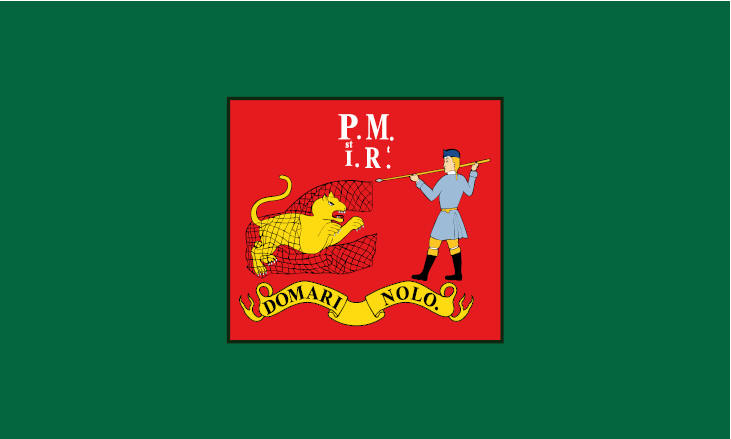
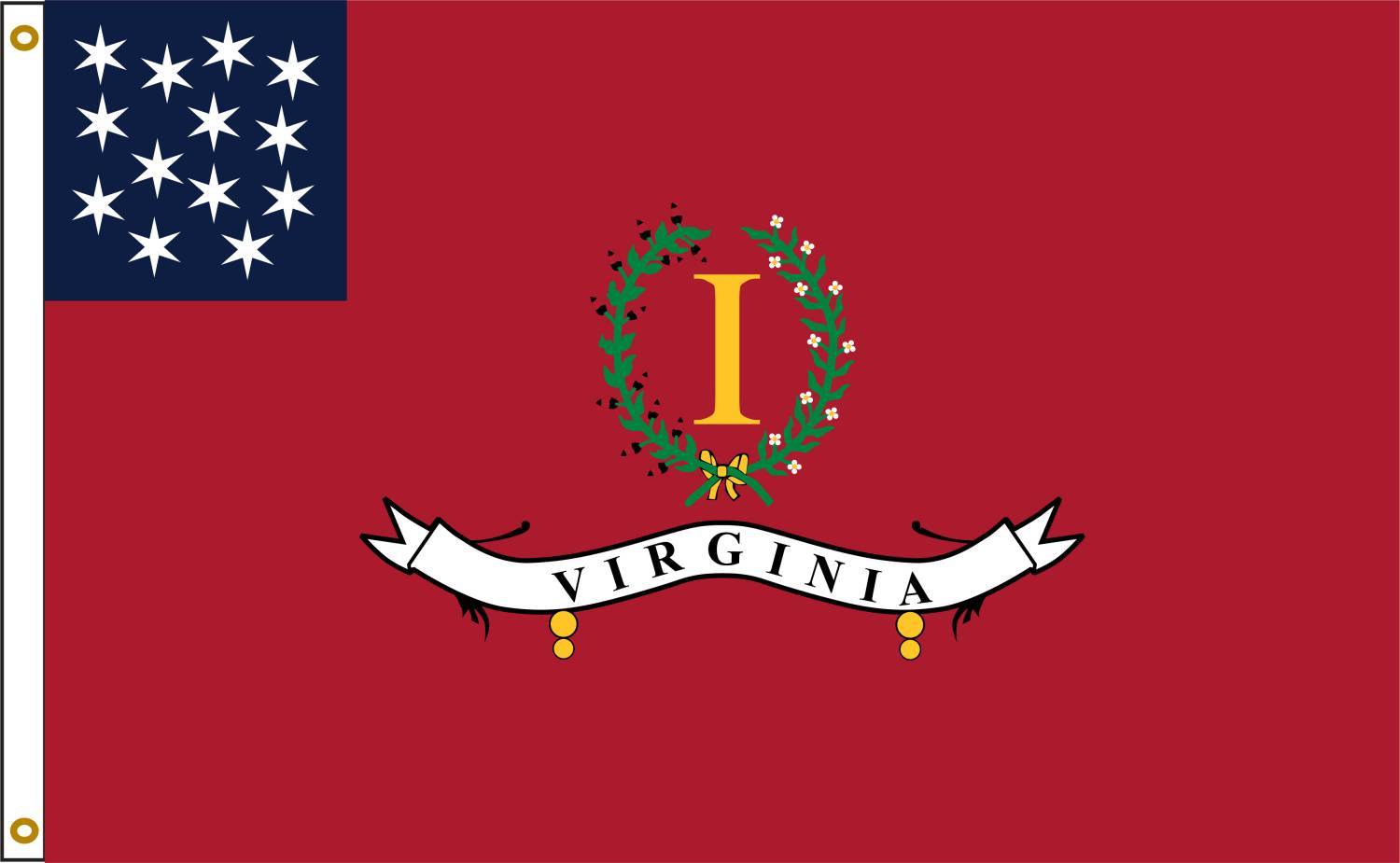
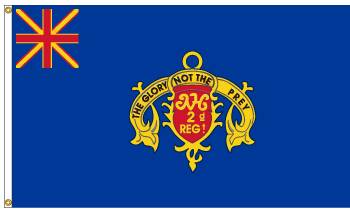
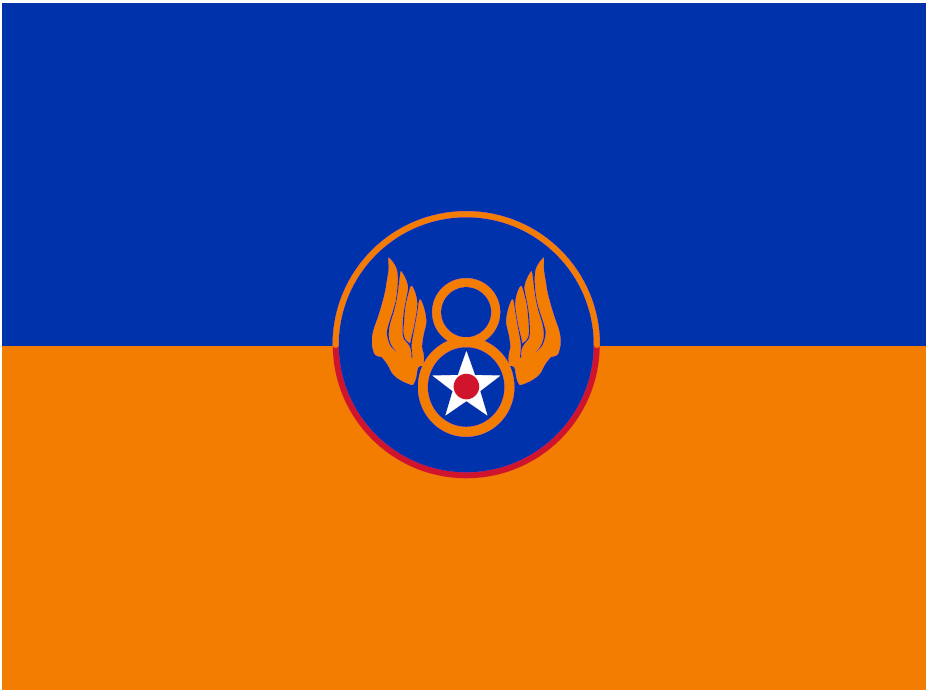
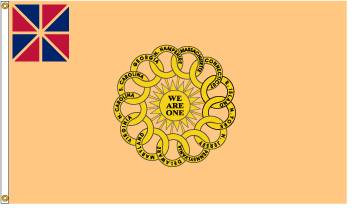
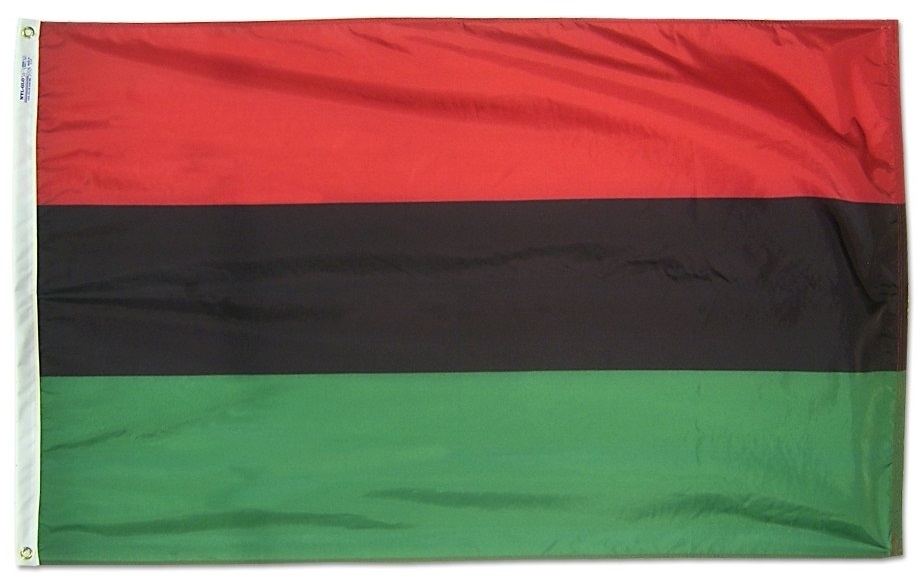
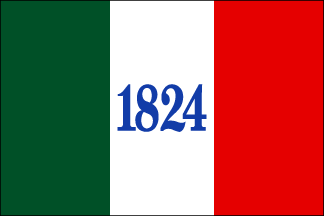
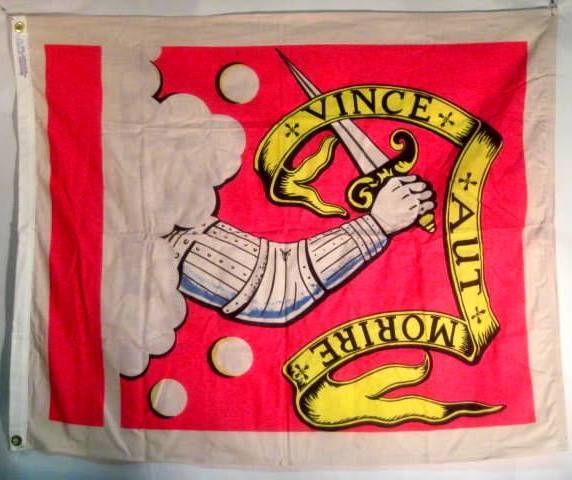




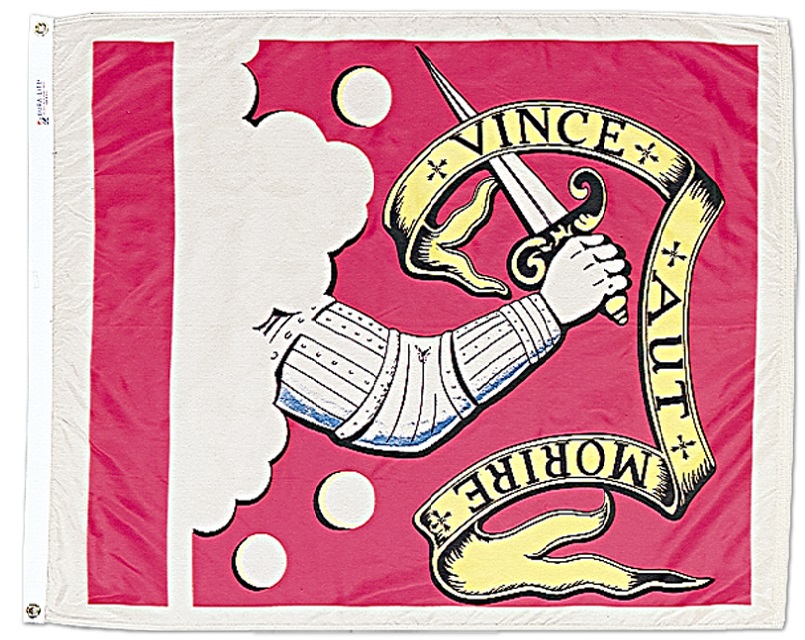
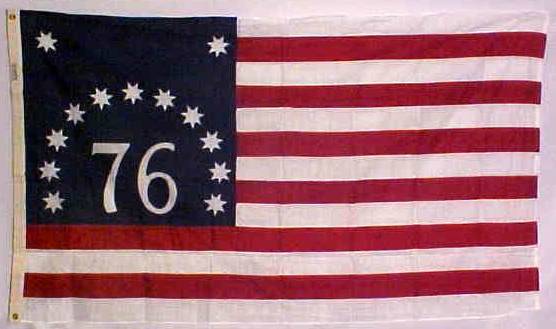
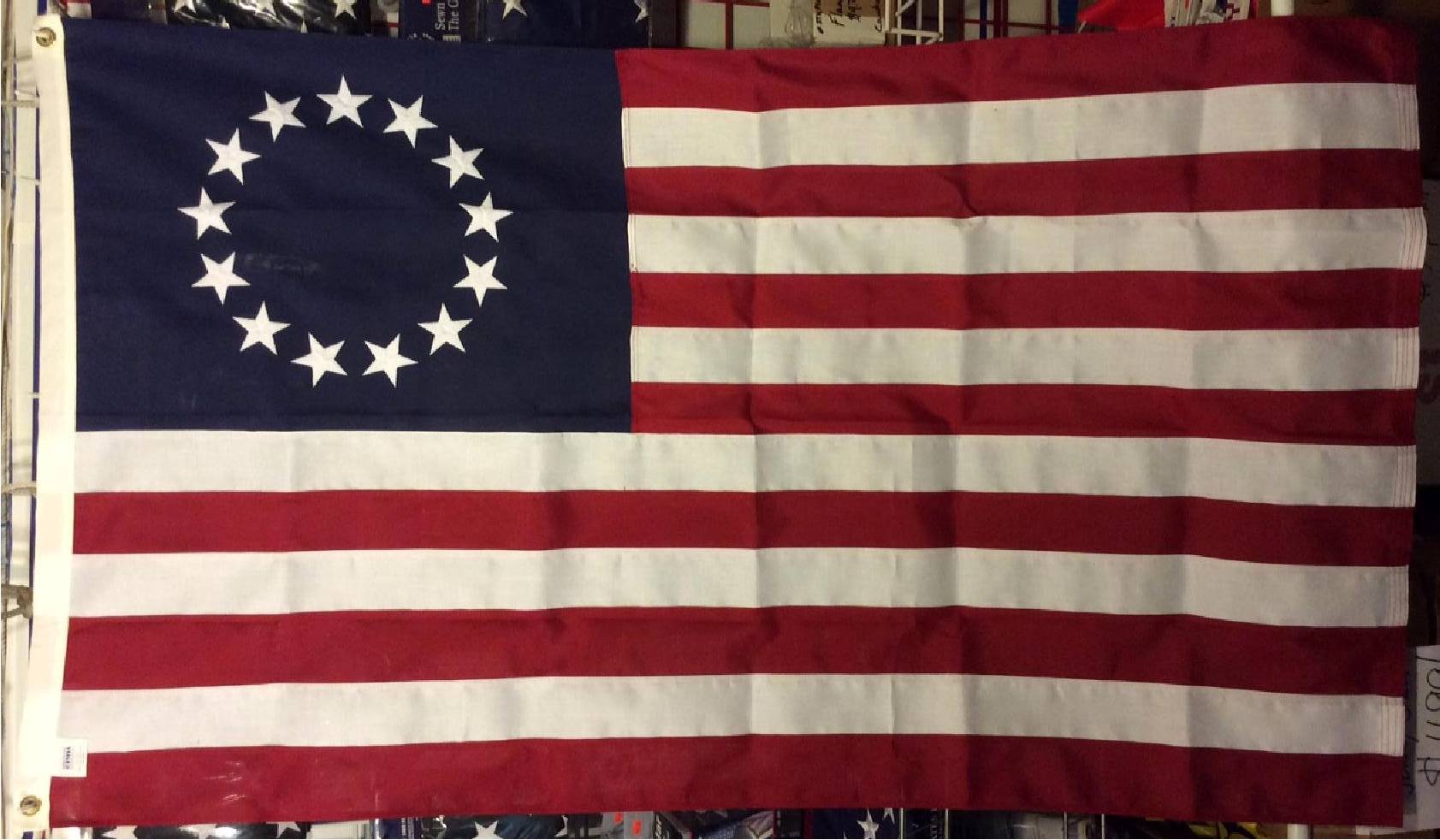
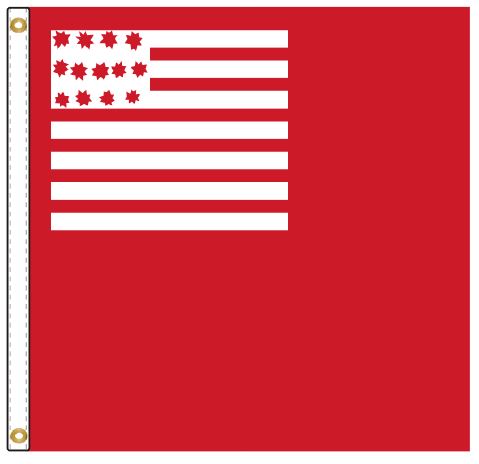
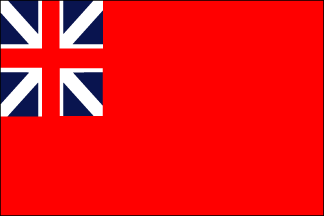
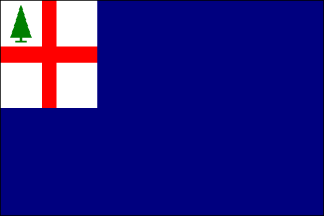

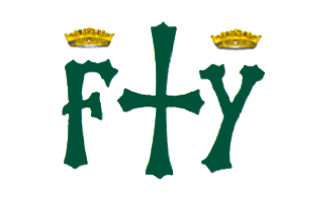
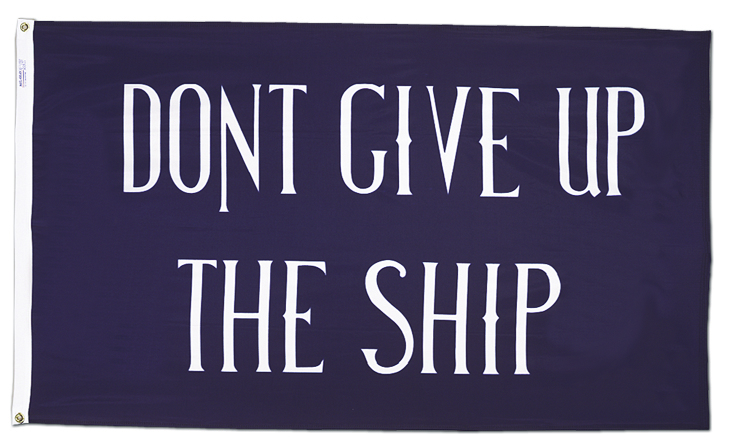

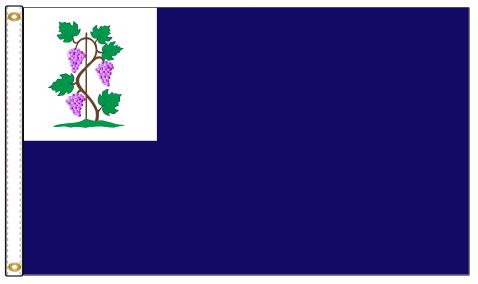

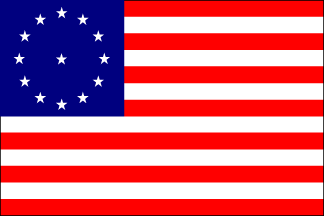


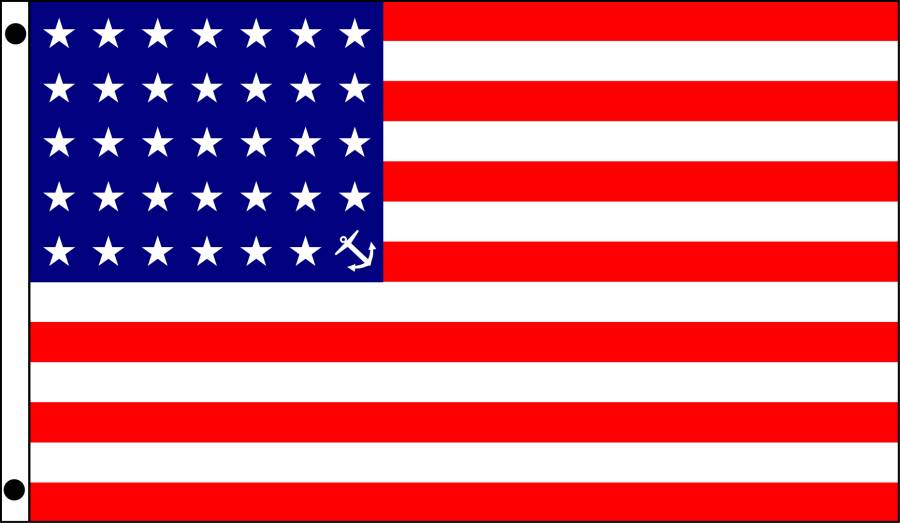

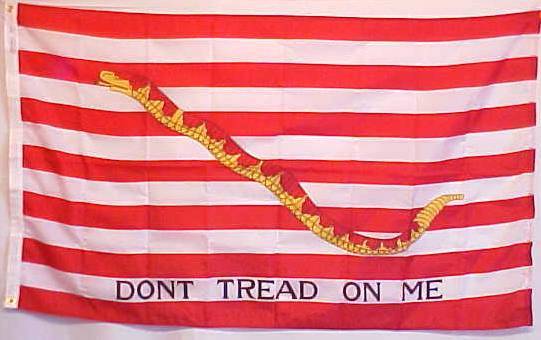
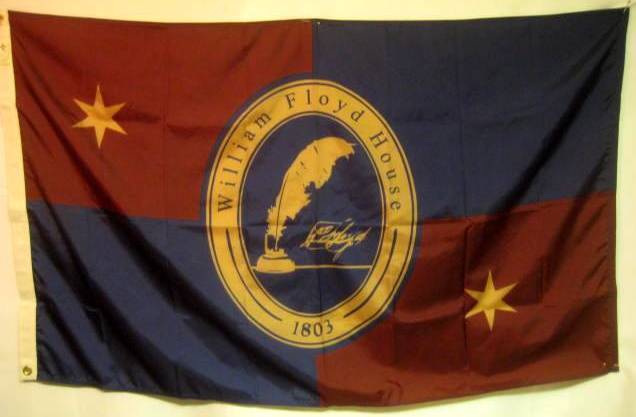
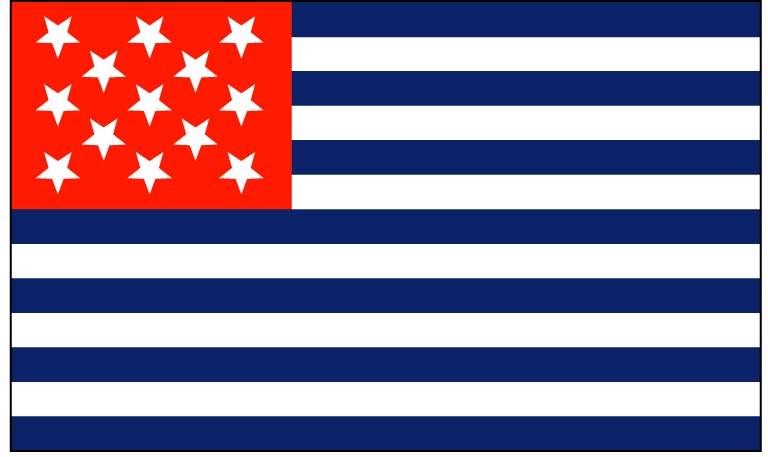


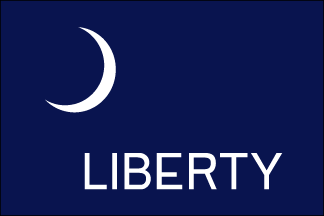
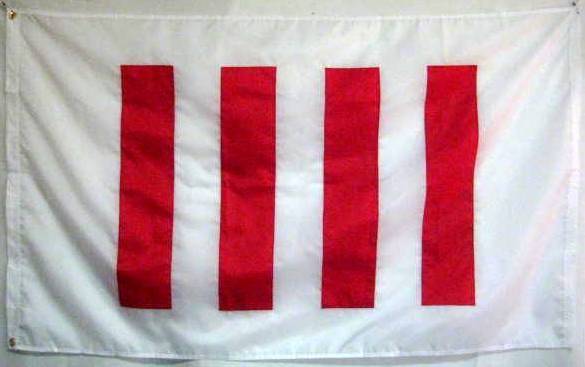
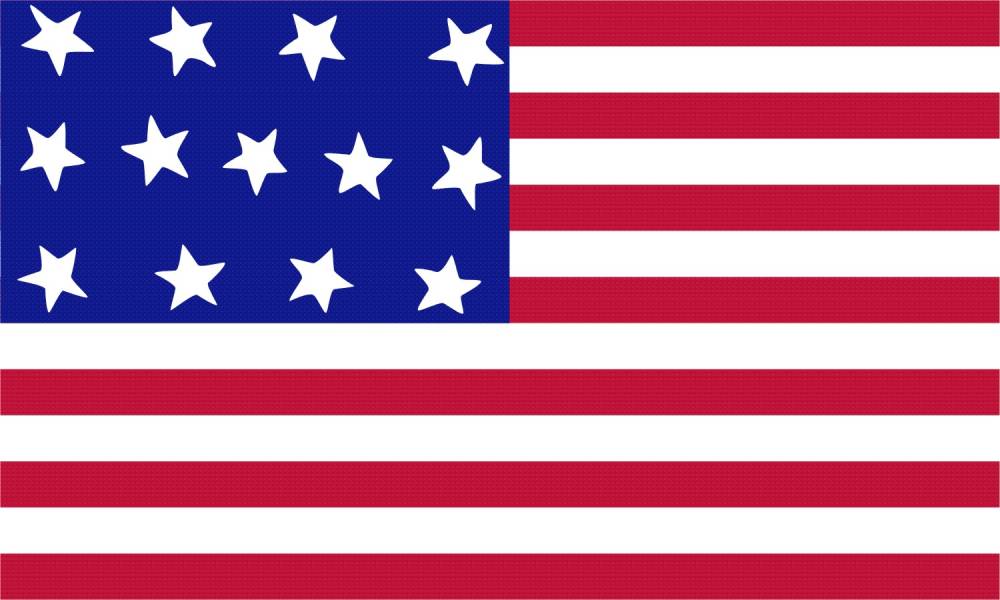

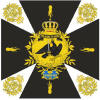
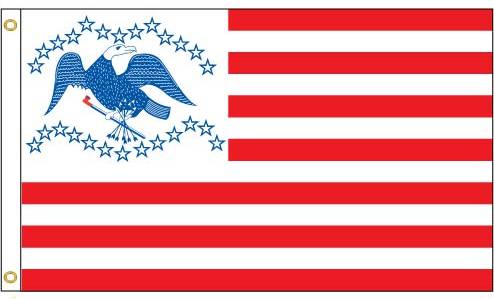
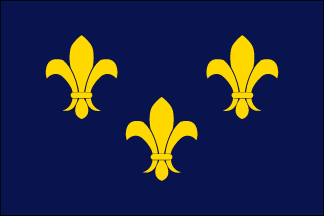
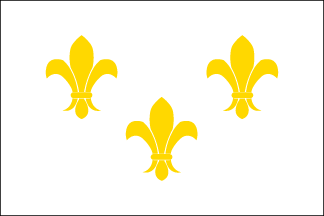
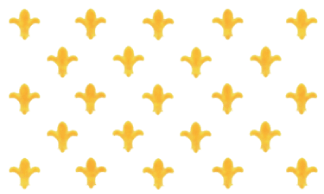

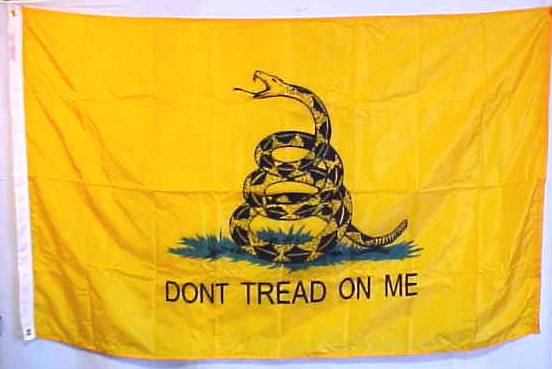
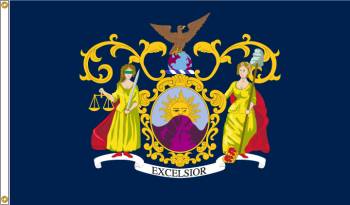



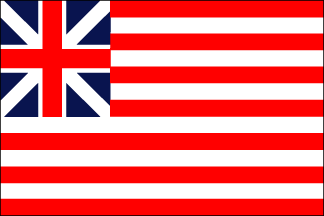
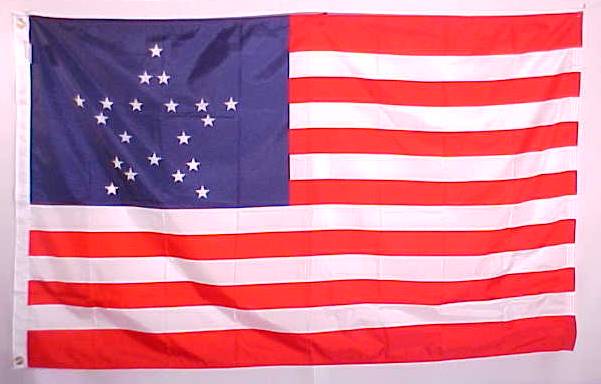
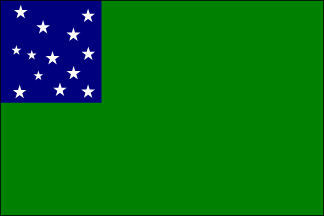
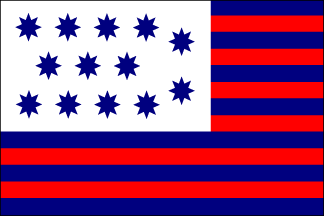
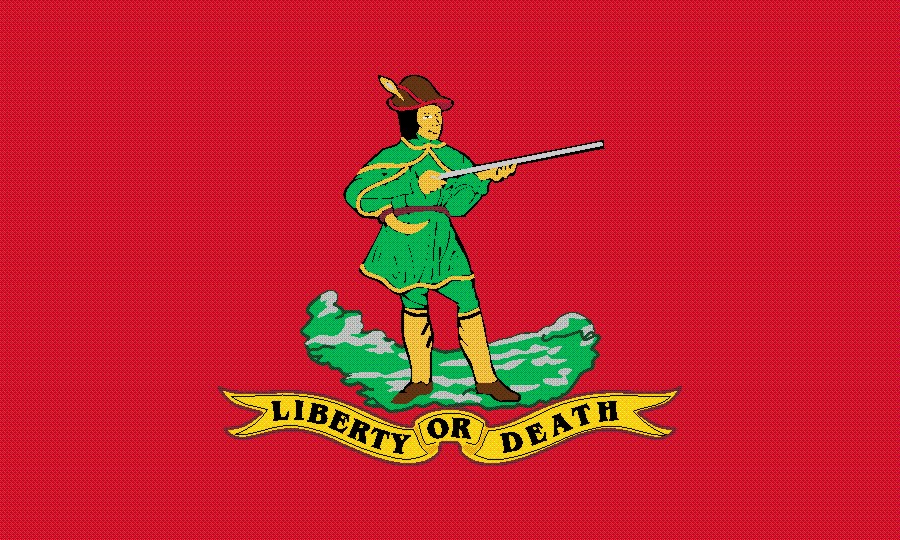

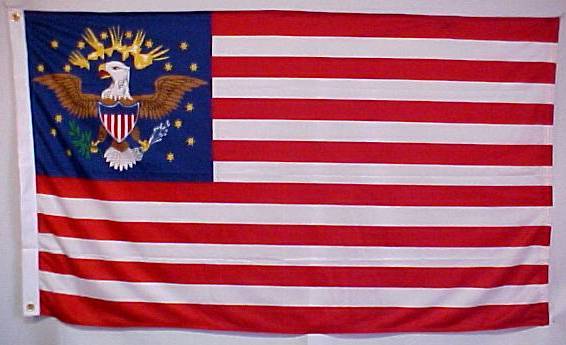 Indian Presentation flag from 1803-1812, as might have been
carried by the Corps. According to Howard Madaus, it was supposedly presented by
President Andrew Jackson to Chippewa Chief Sheboy-way.
Indian Presentation flag from 1803-1812, as might have been
carried by the Corps. According to Howard Madaus, it was supposedly presented by
President Andrew Jackson to Chippewa Chief Sheboy-way.